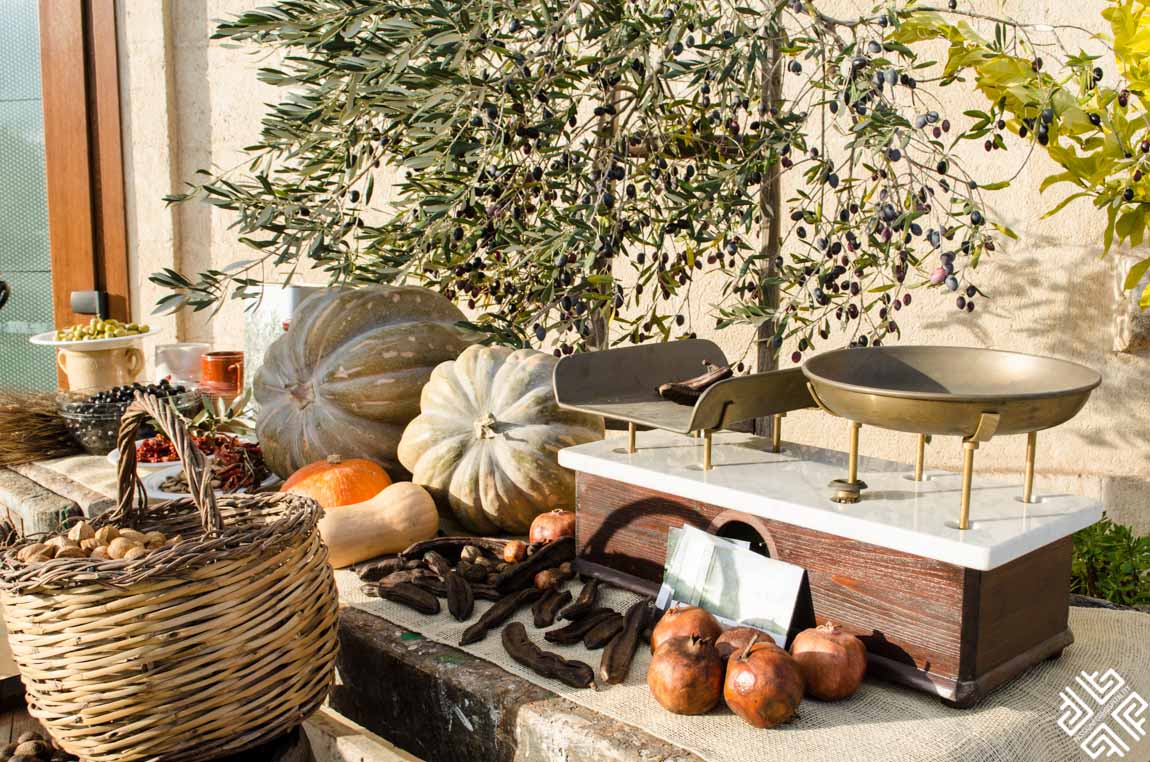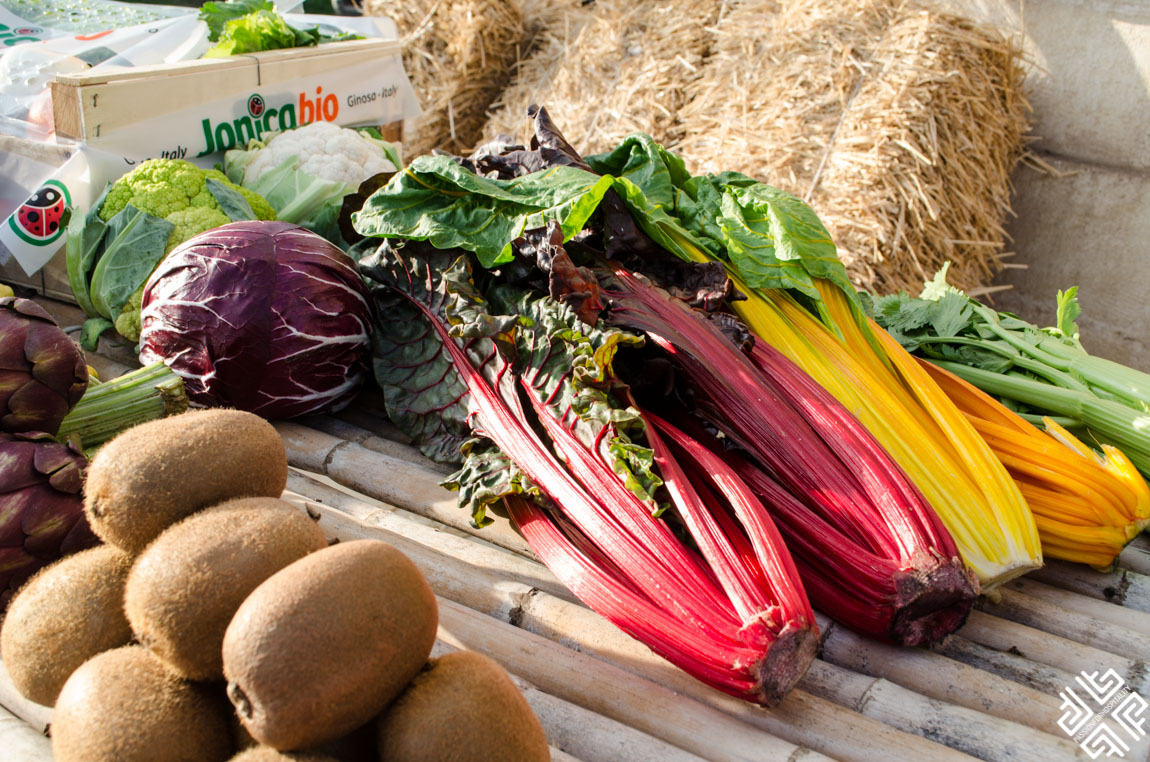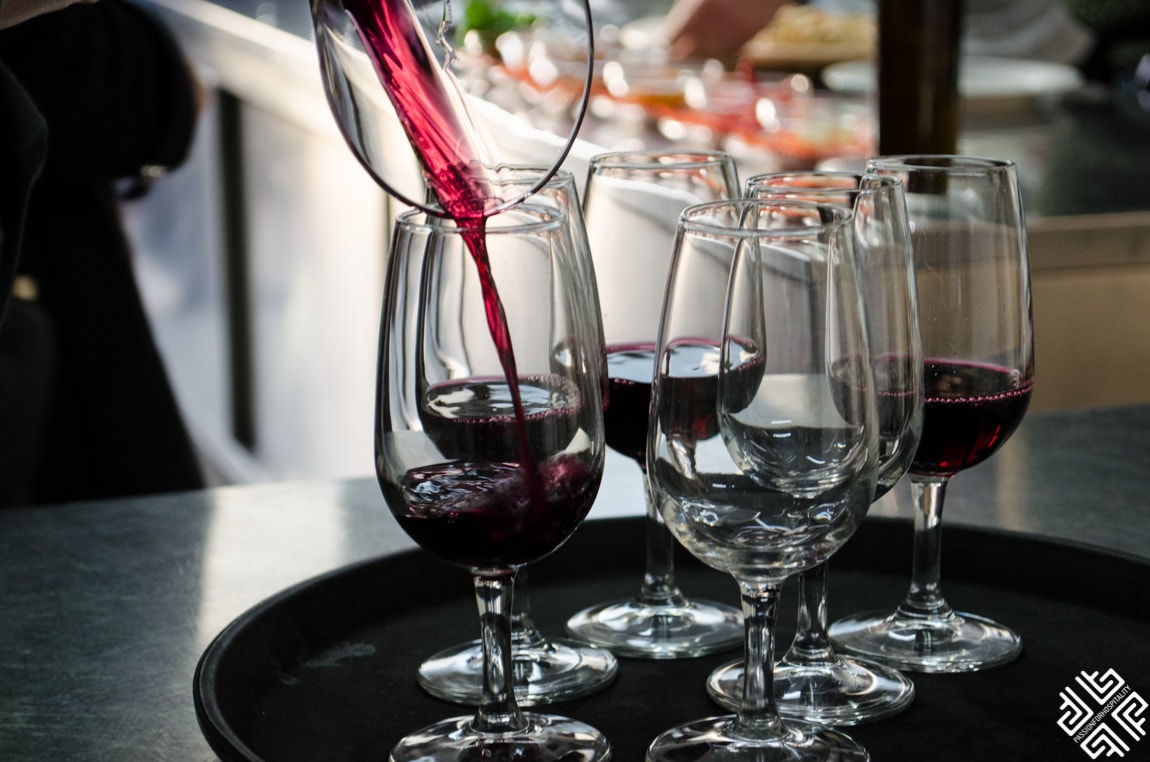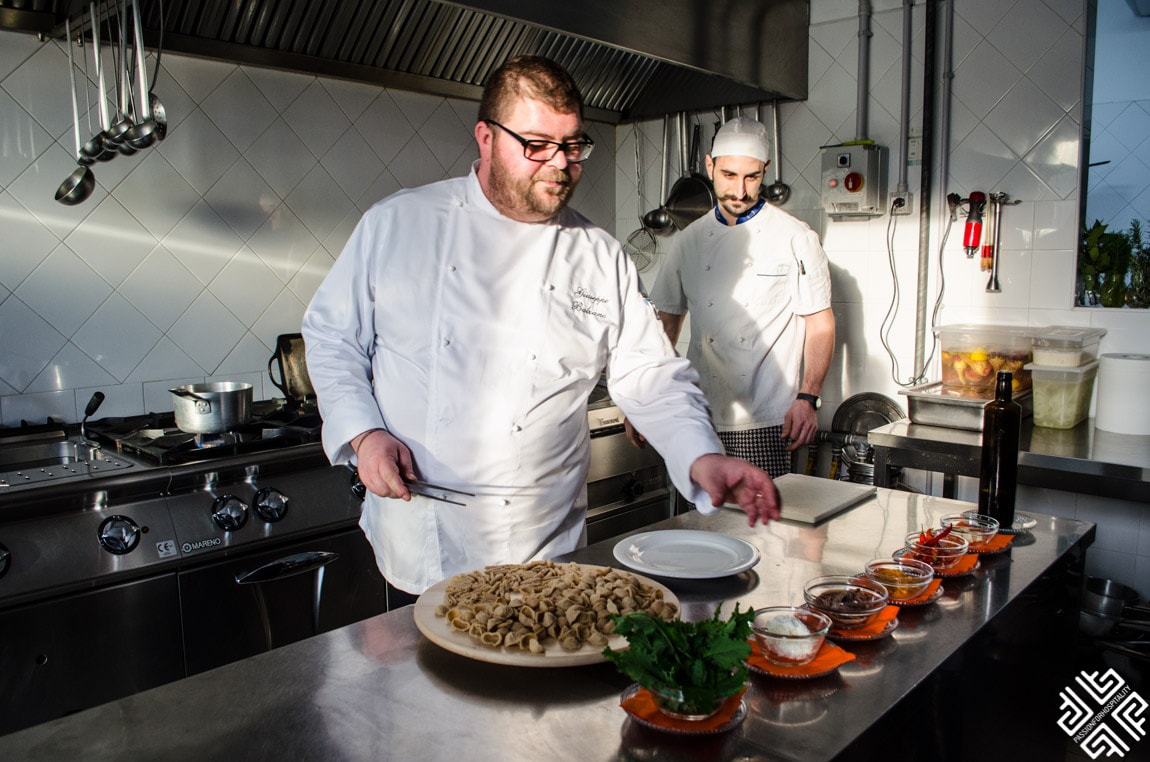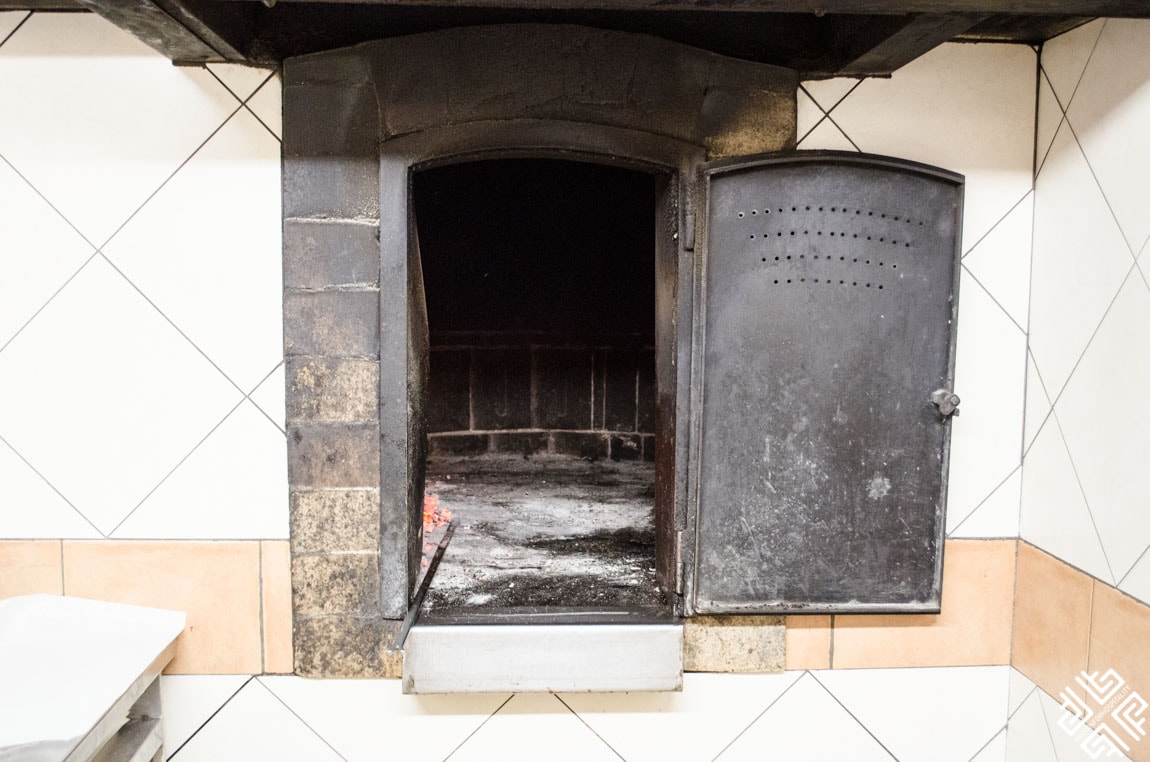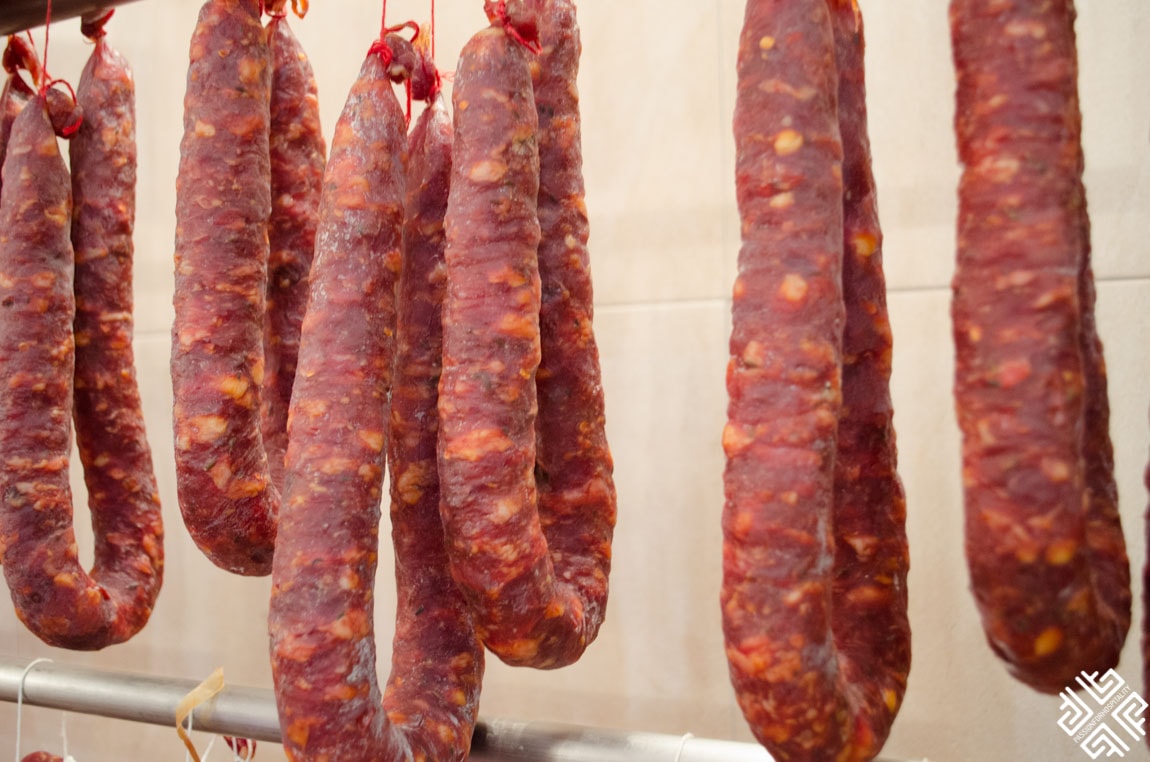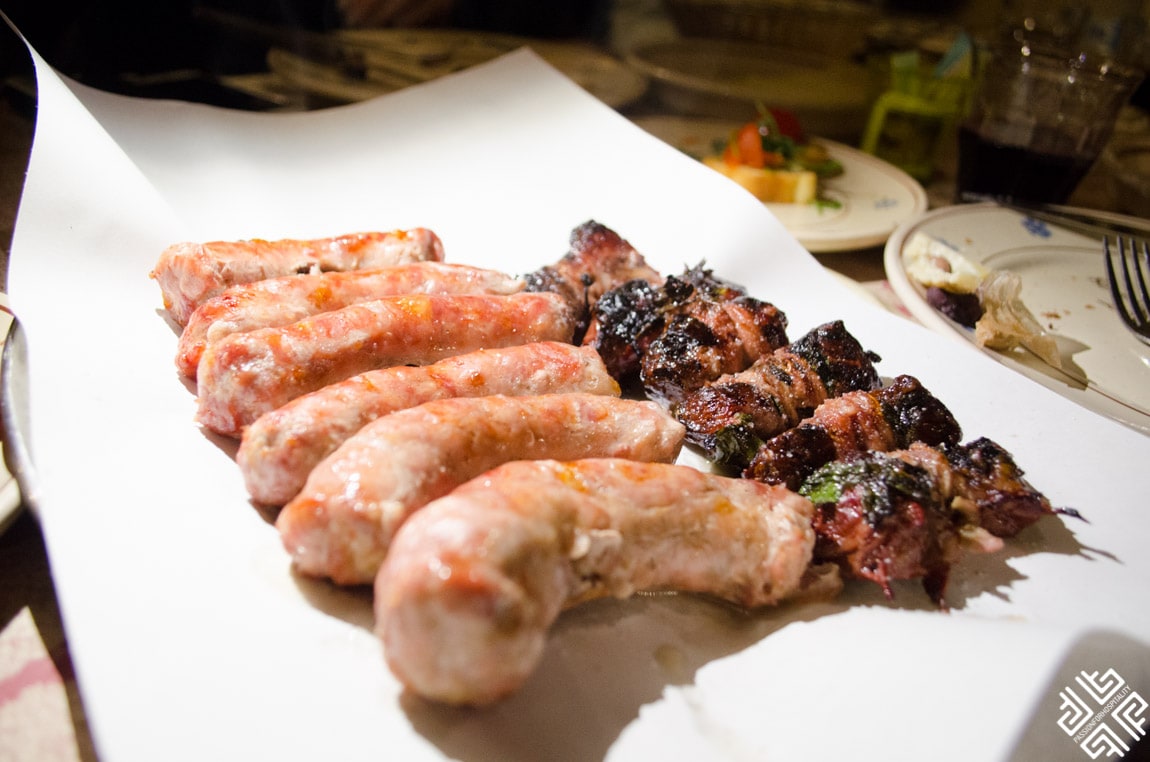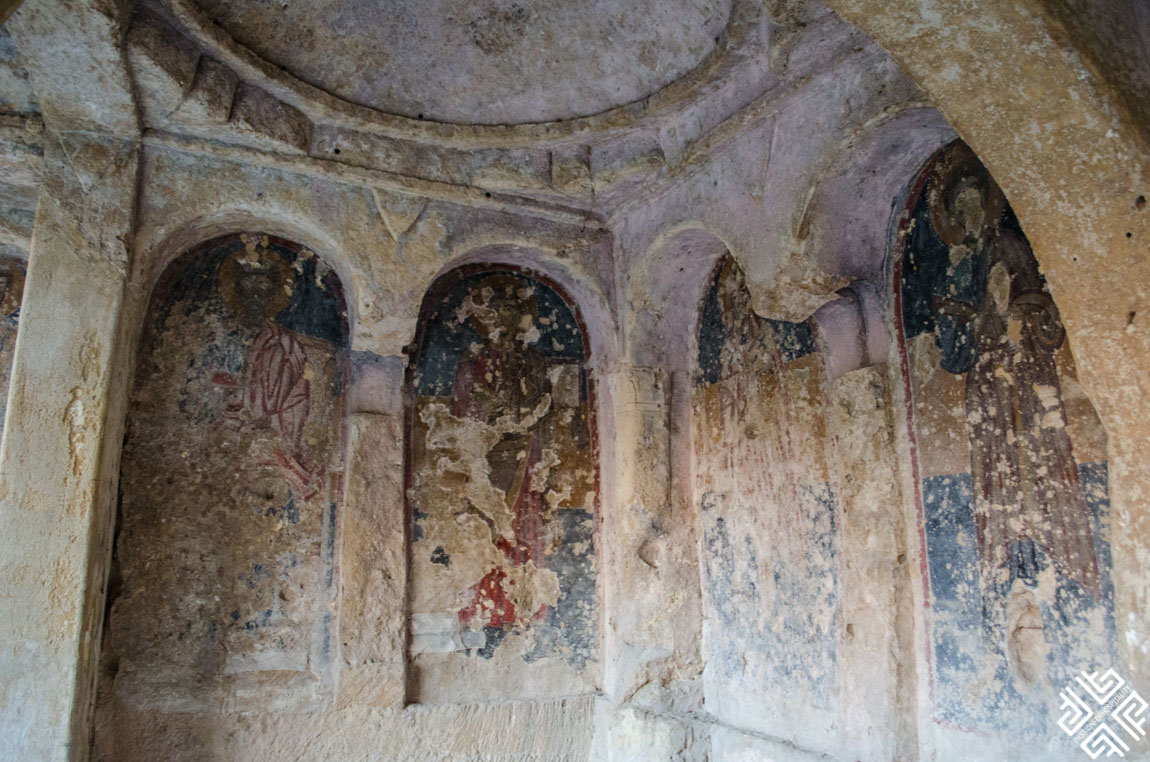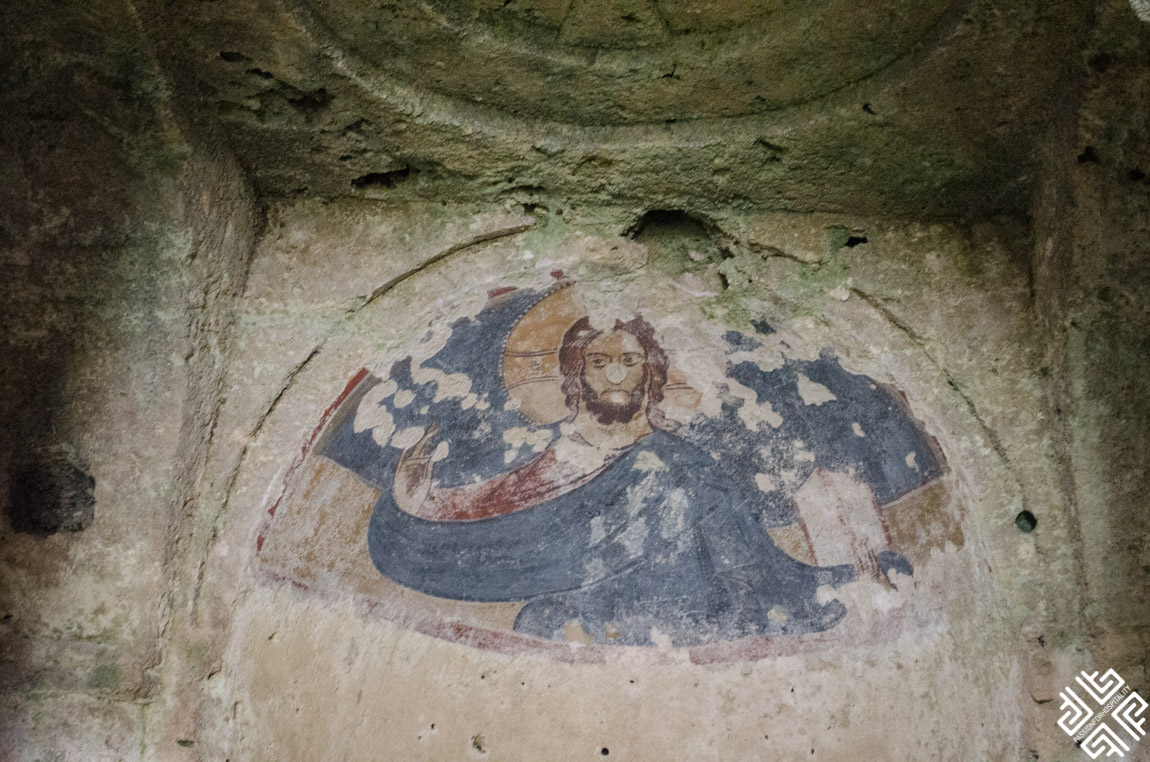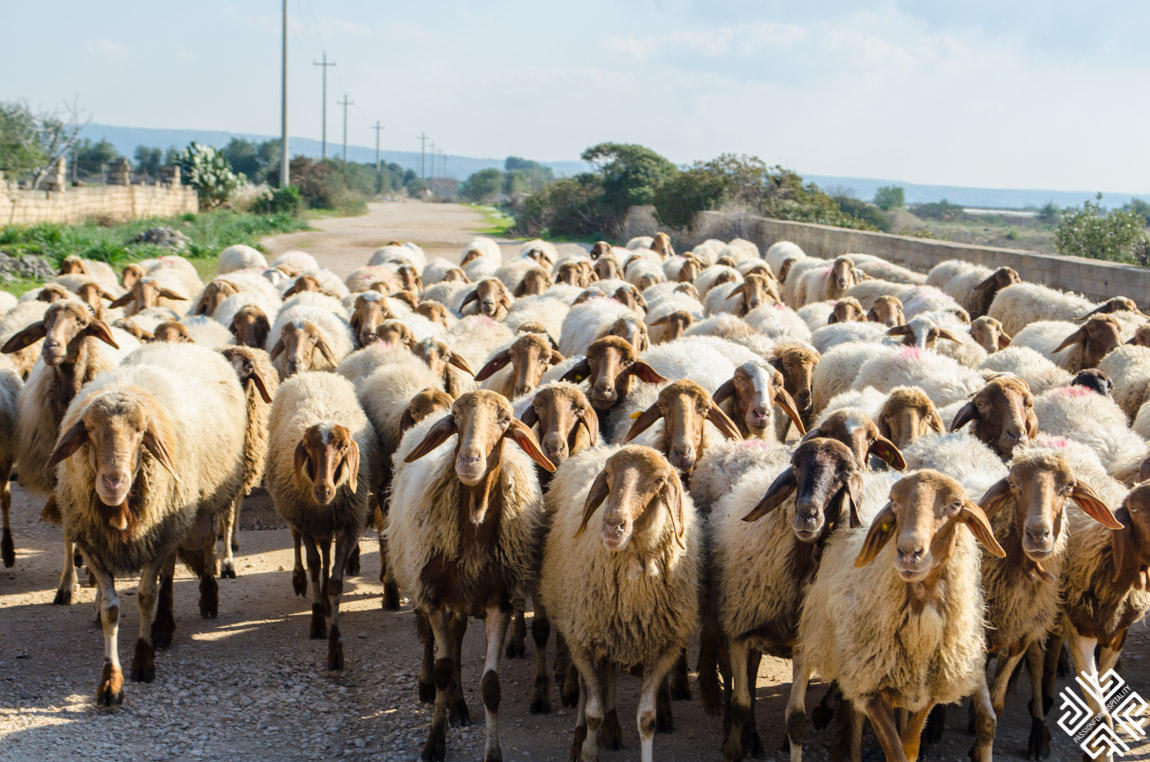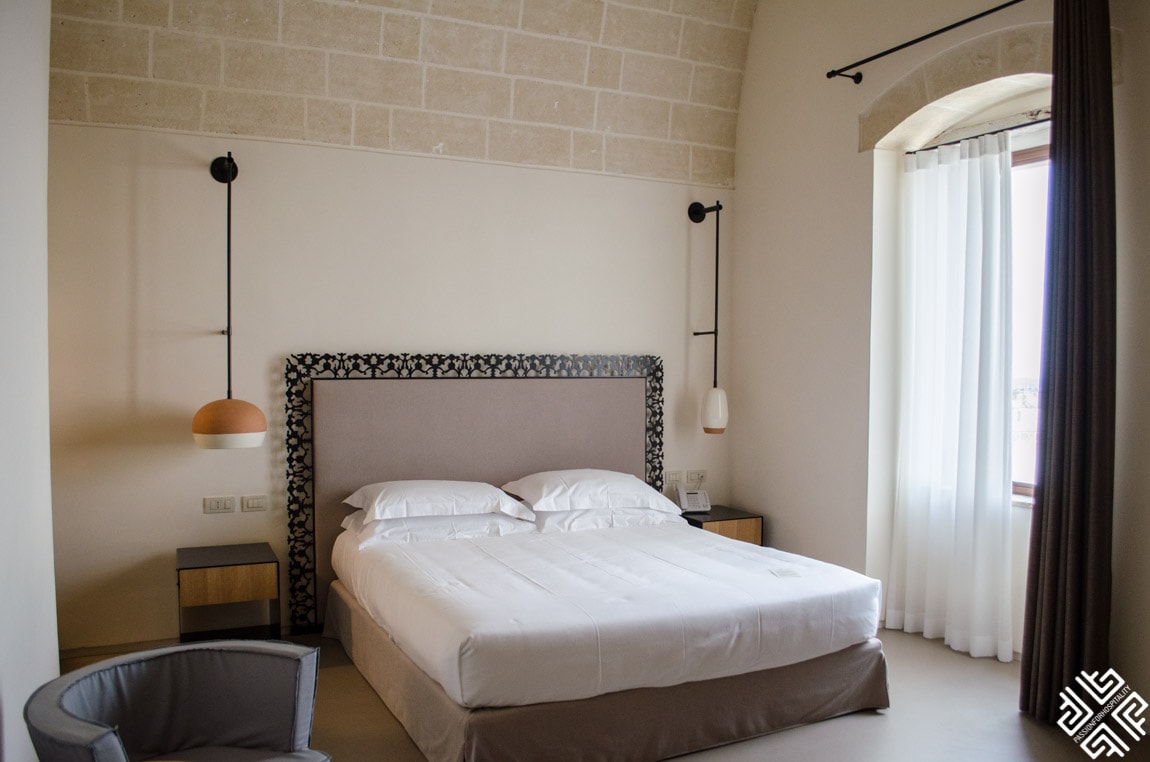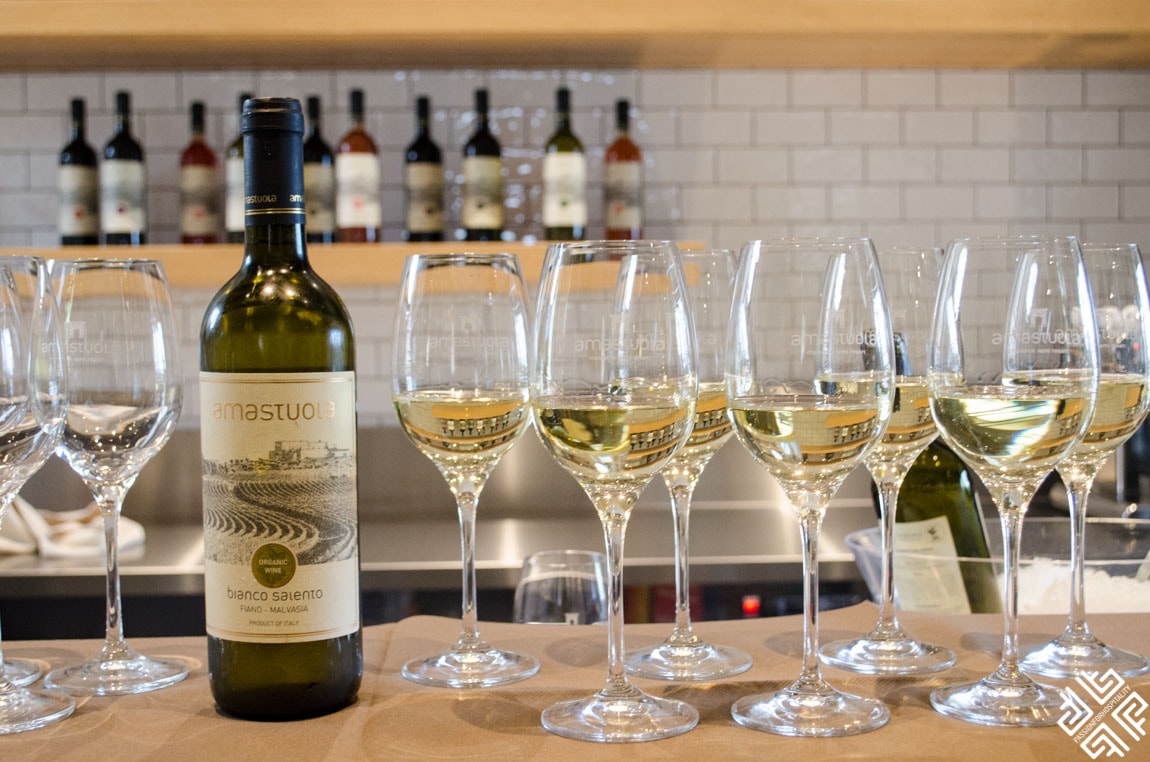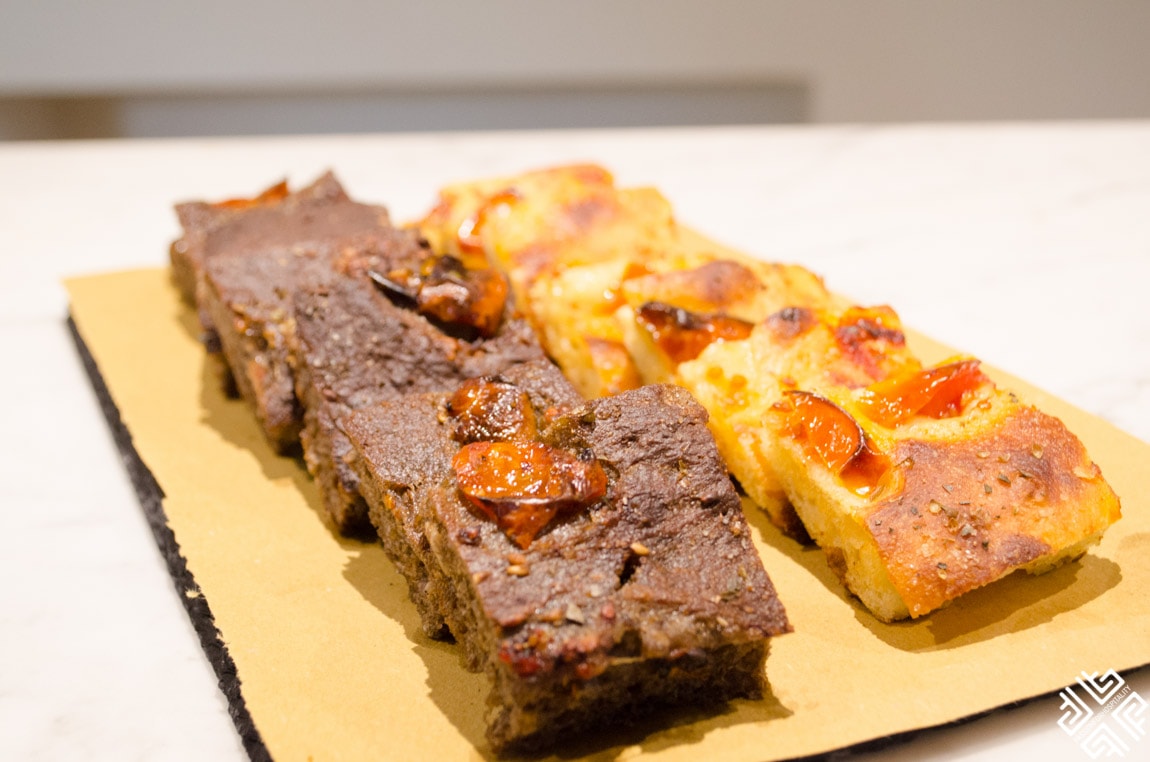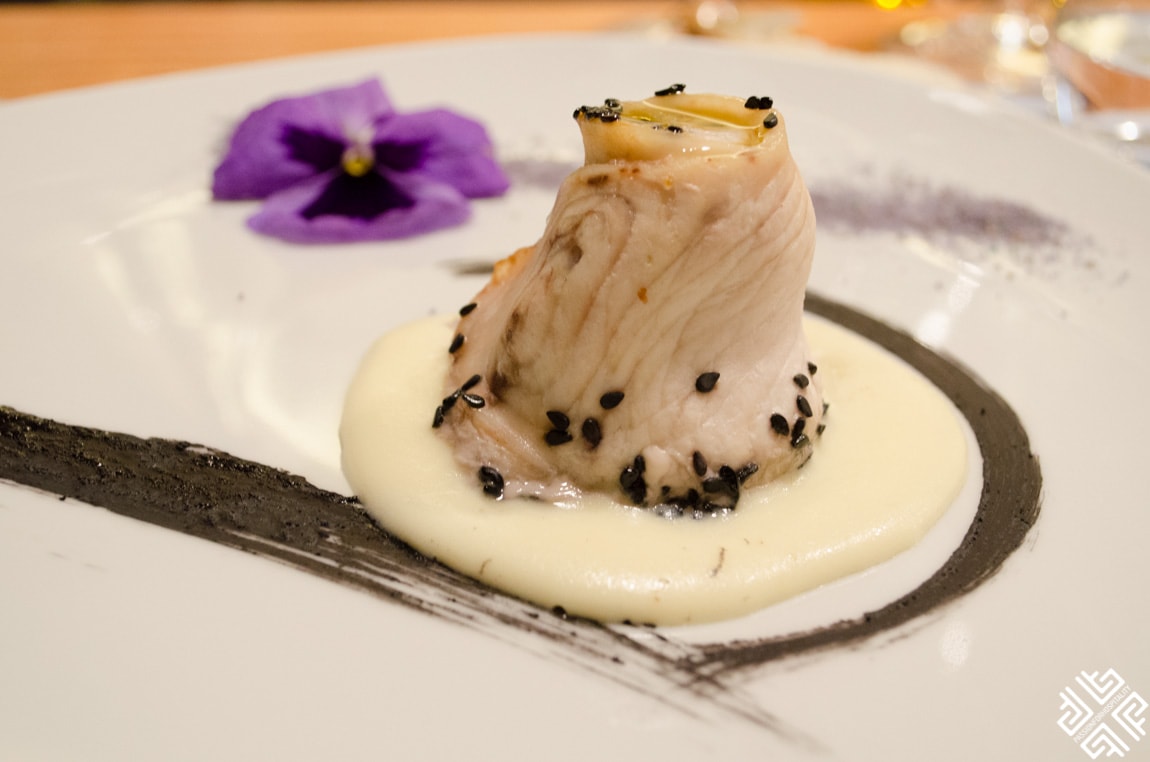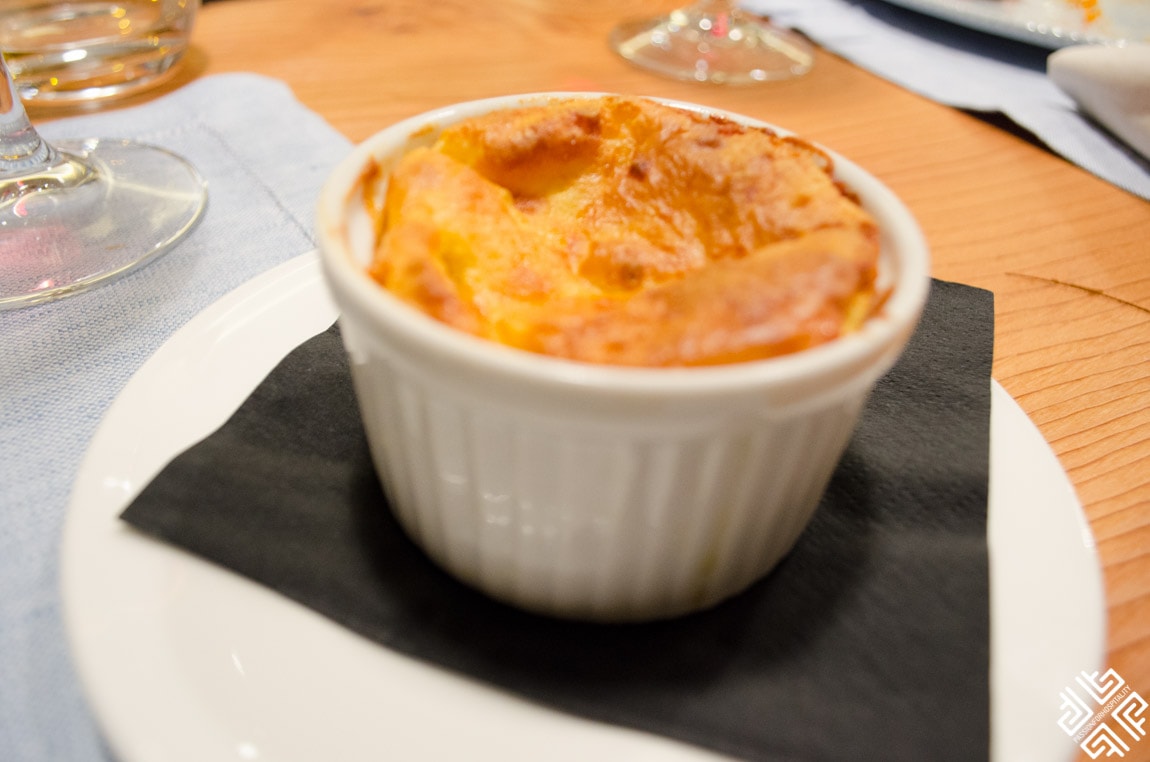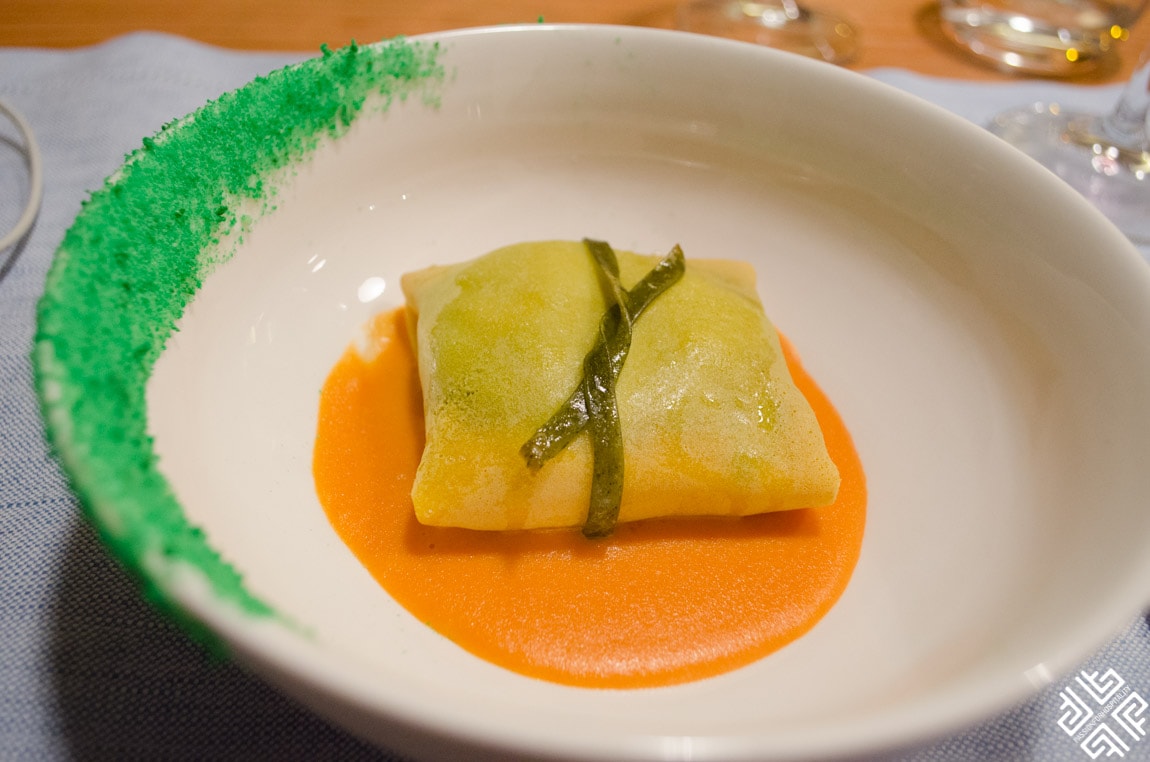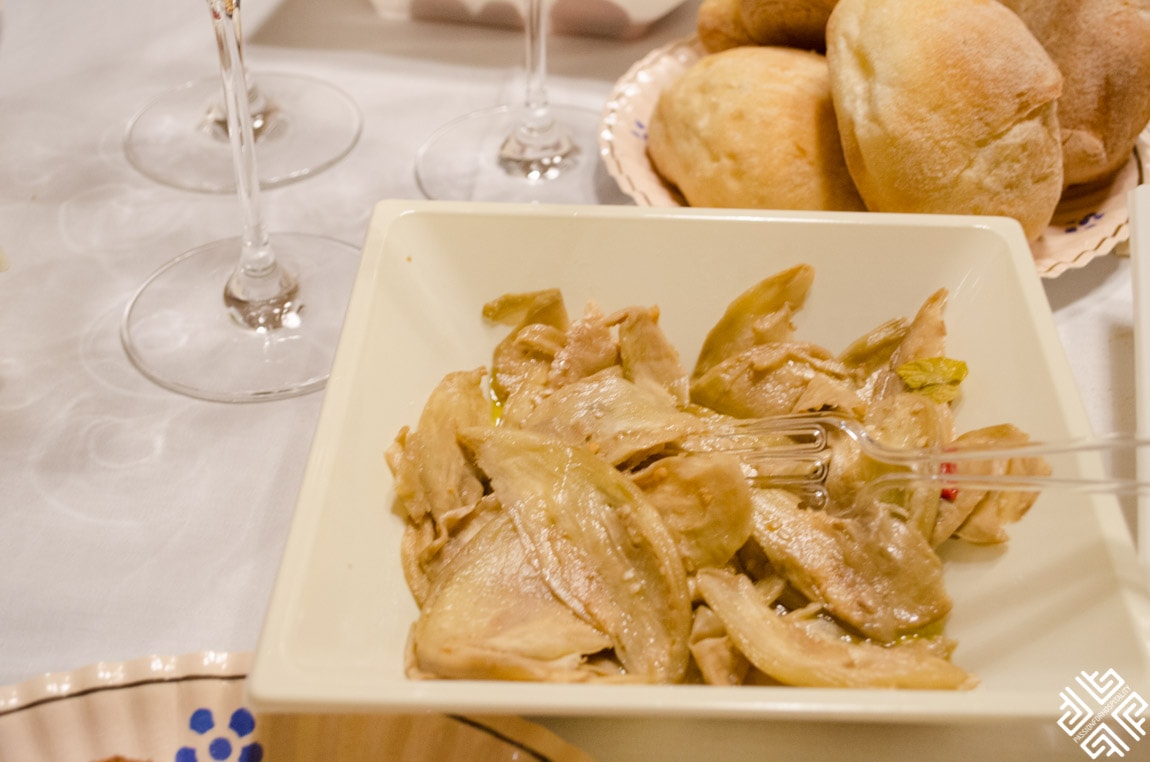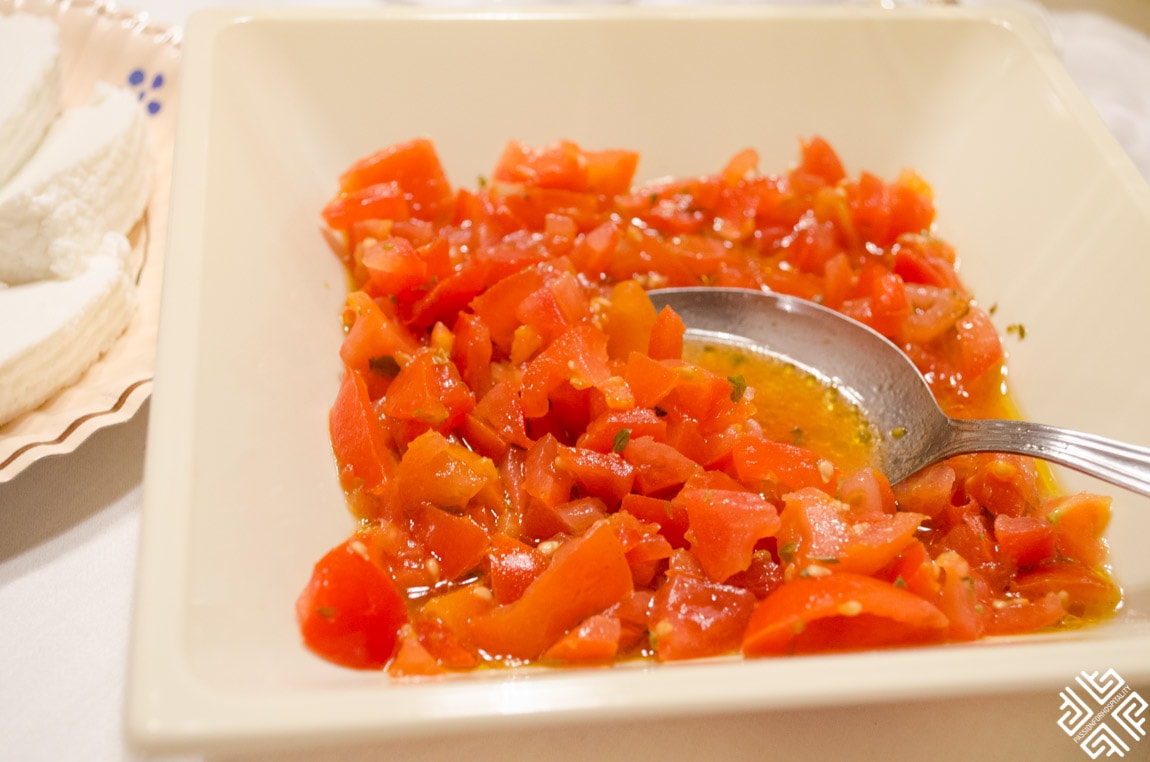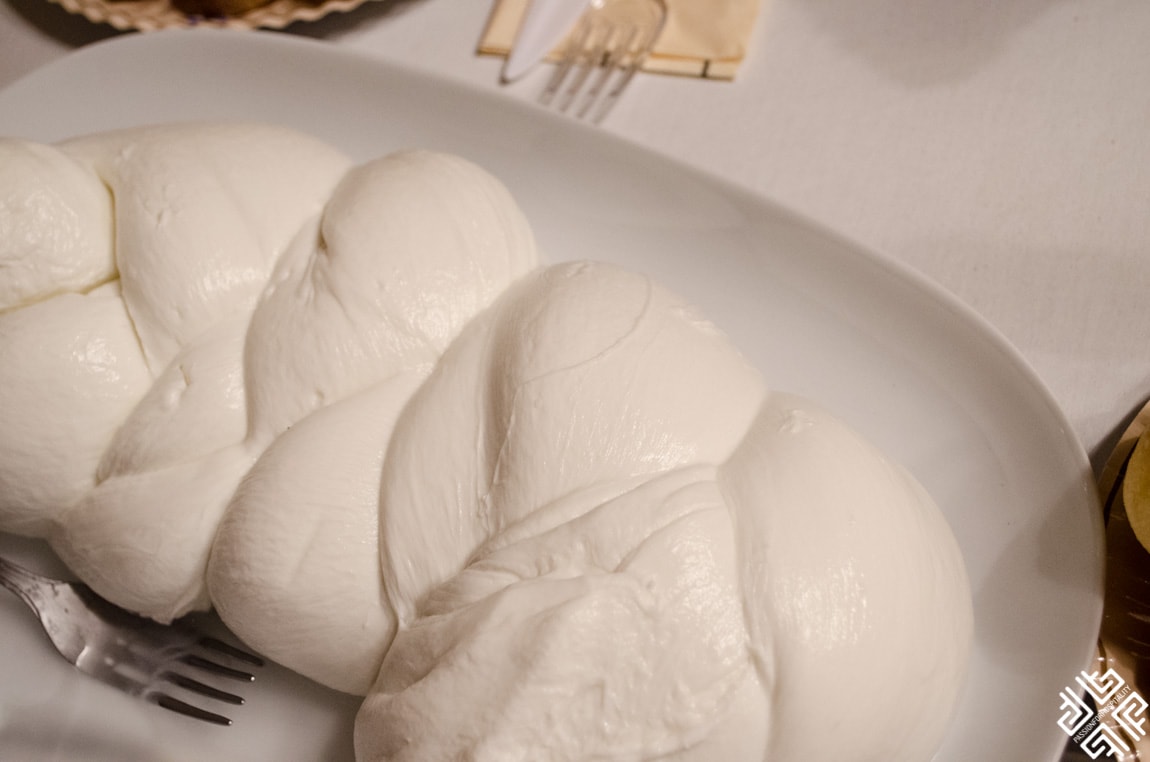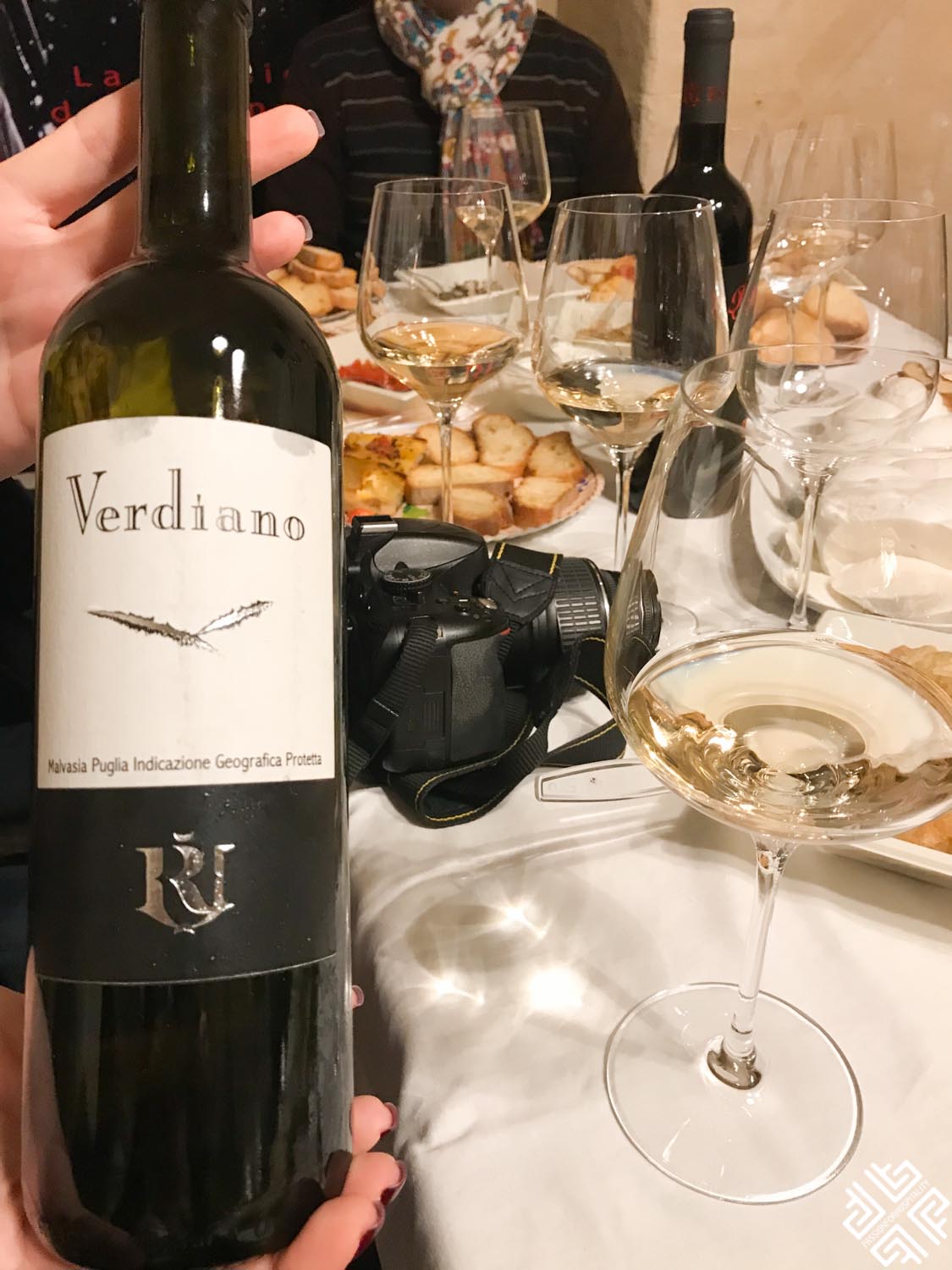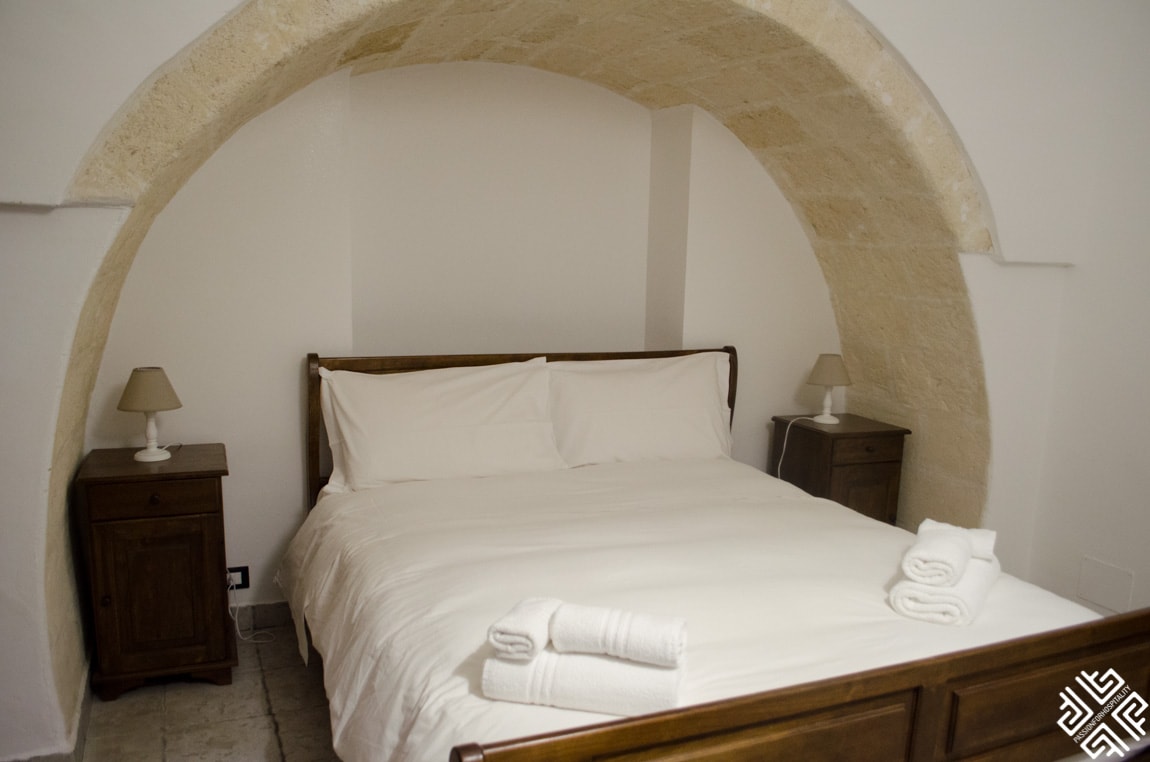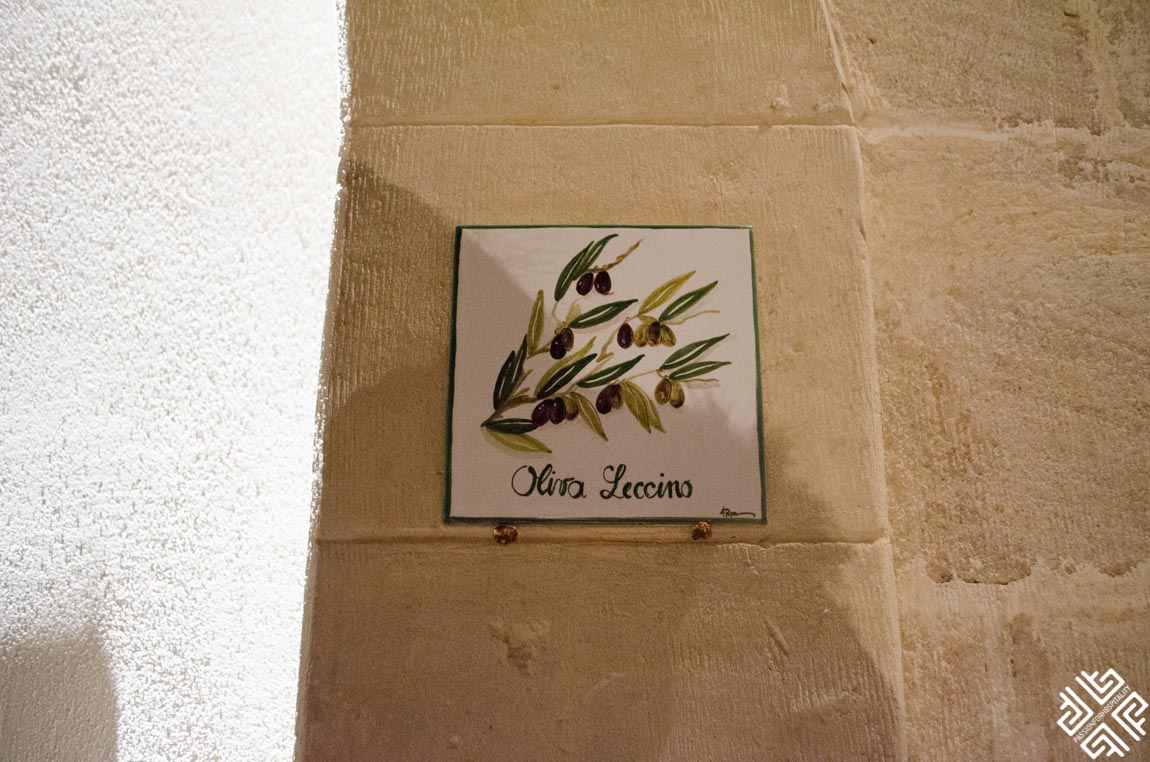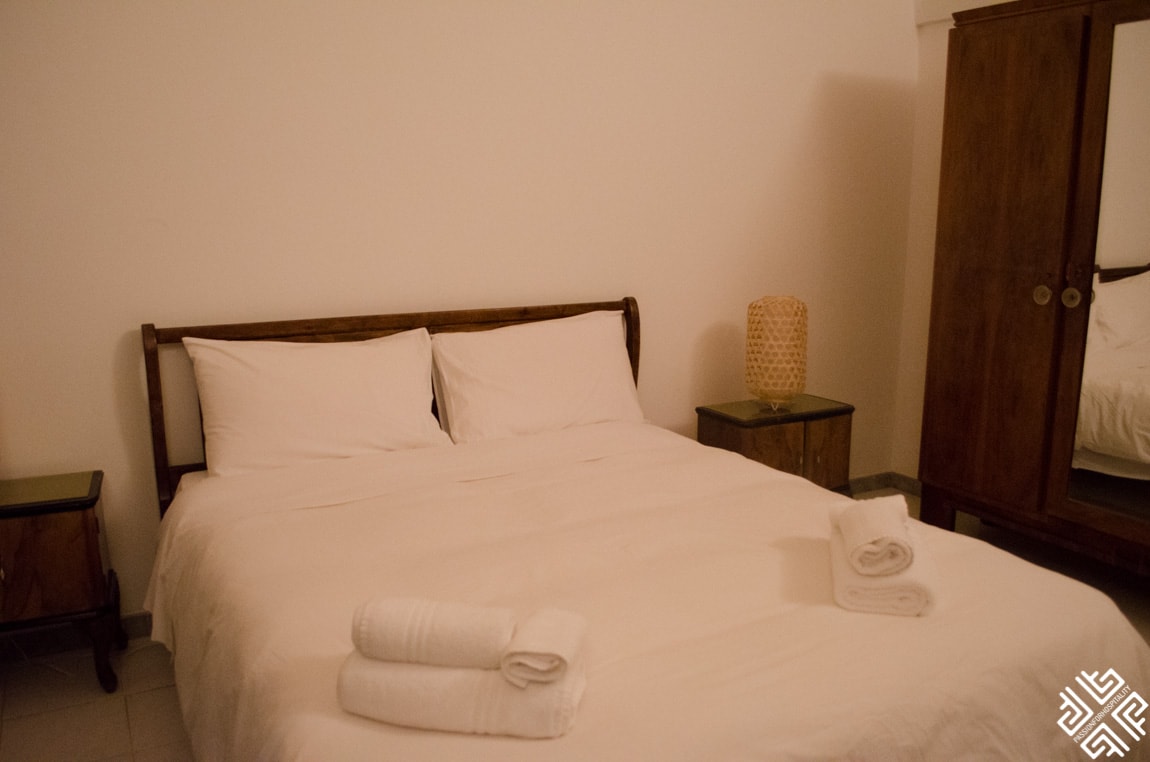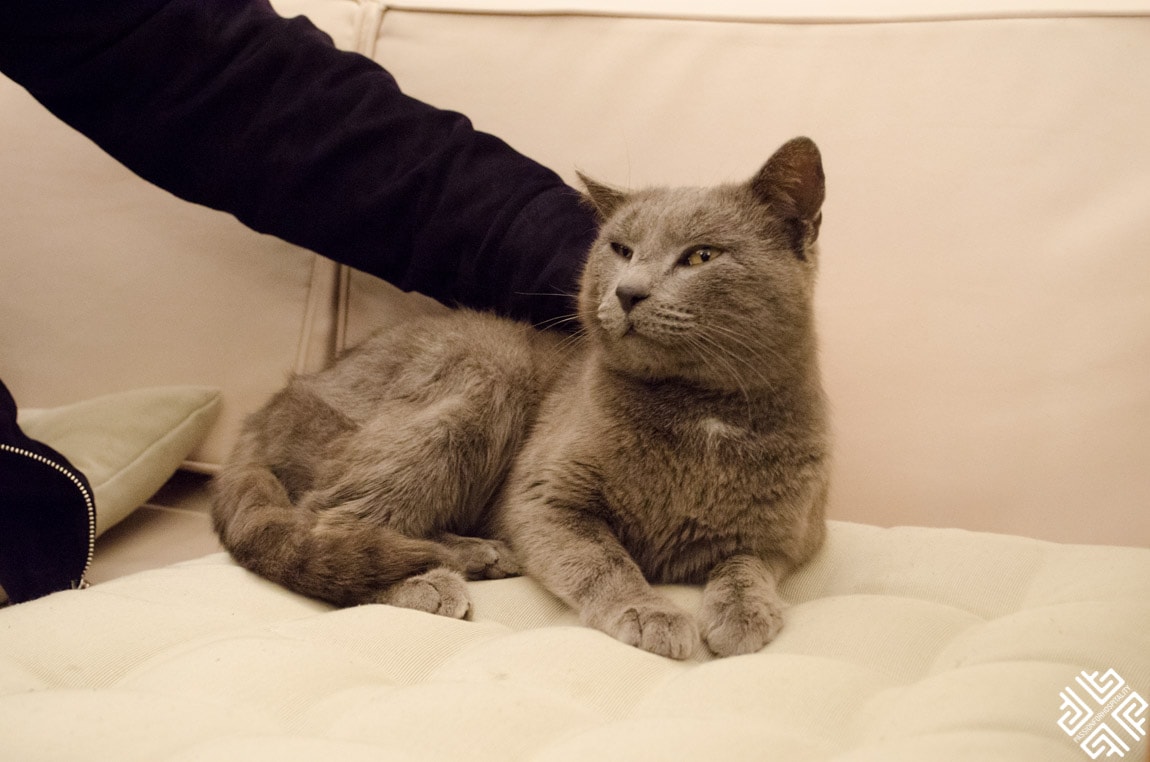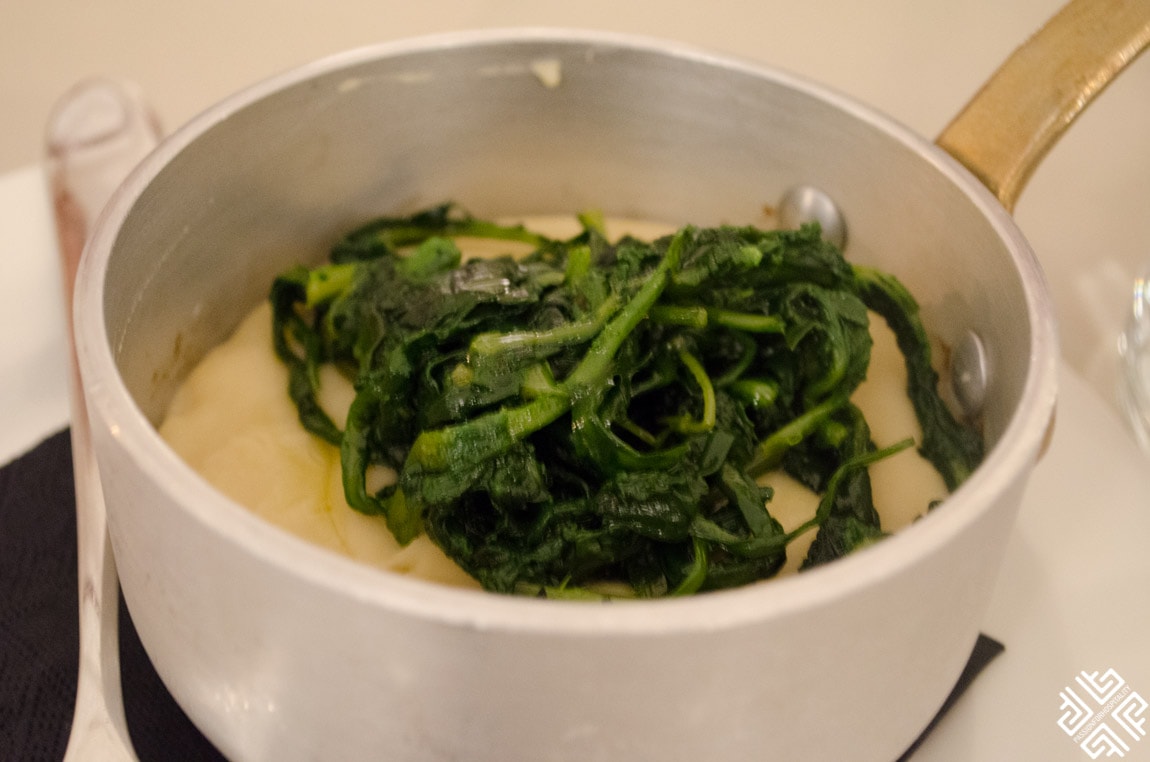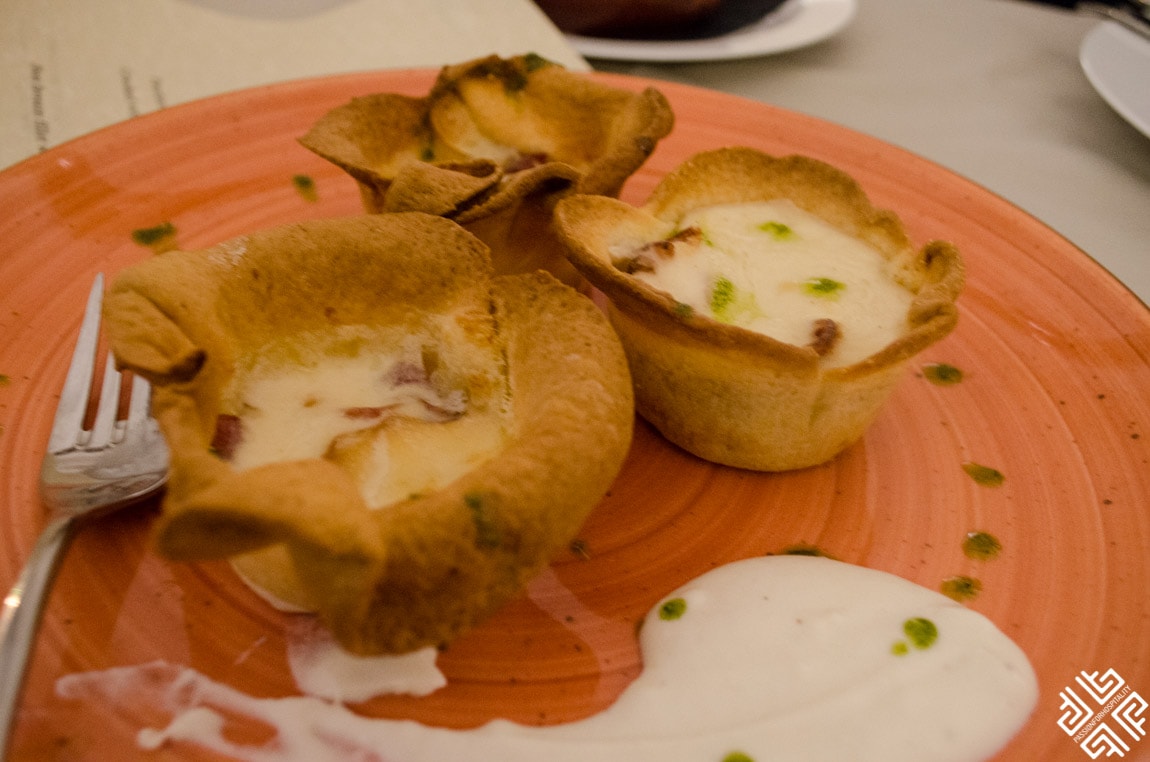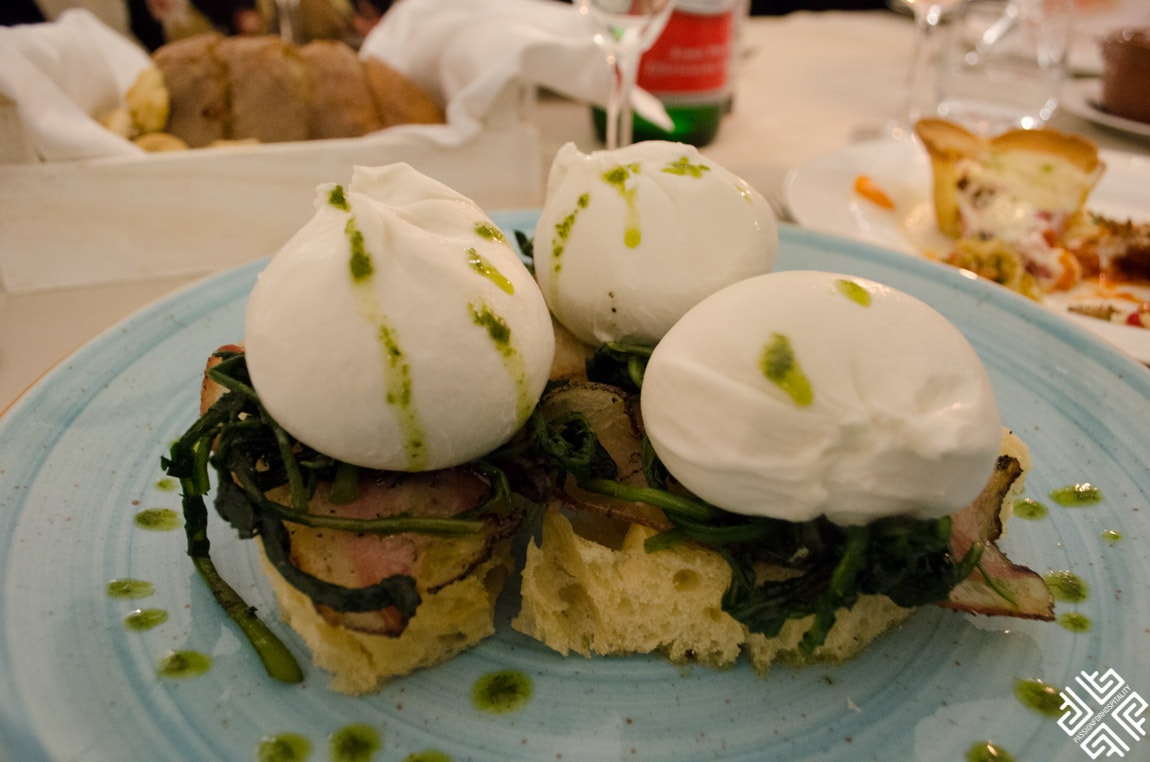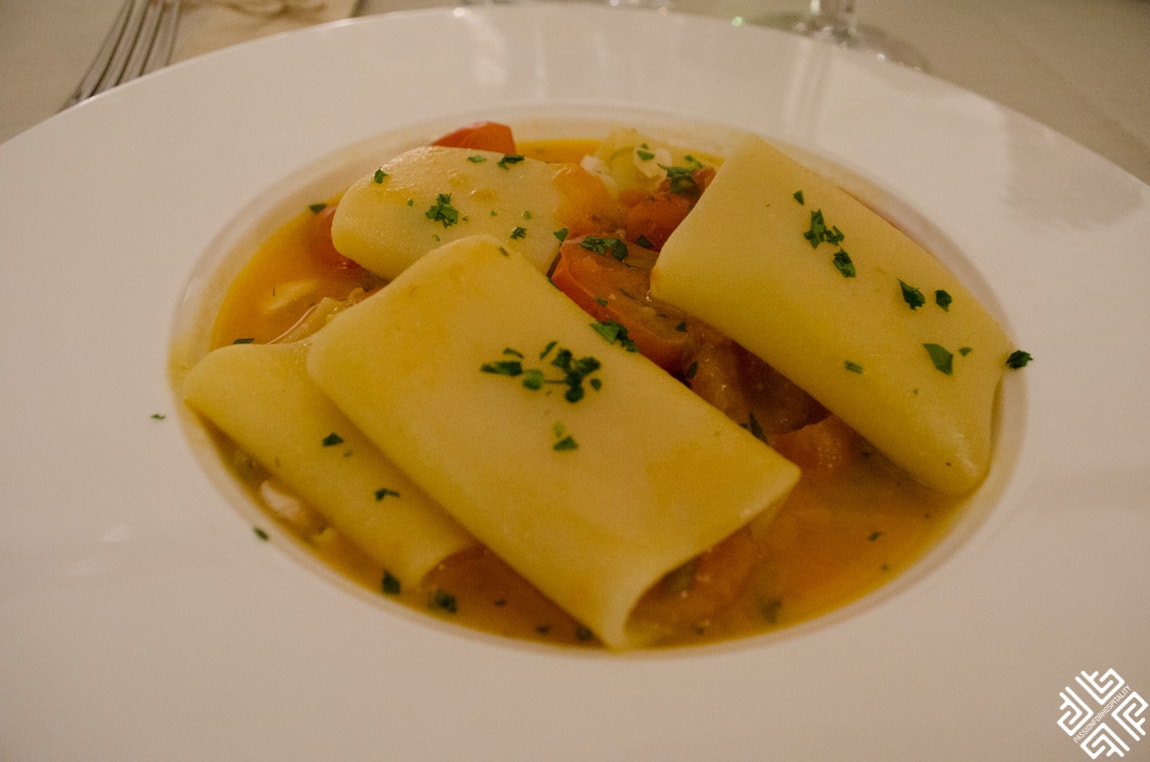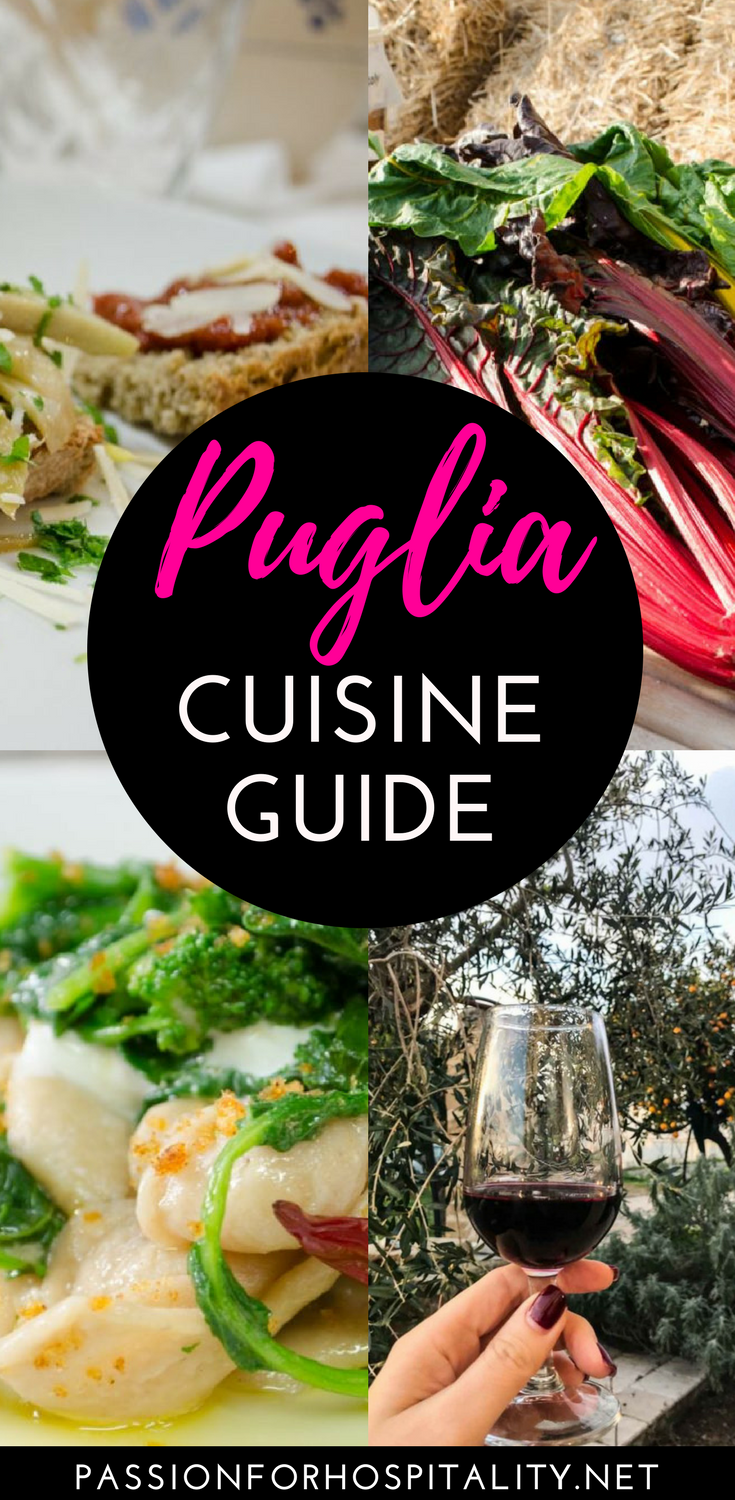So you have been to Italy, you’ve probably visited the Colosseum in Rome, shopped in Milan and experienced the gondola ride in Venice but have you been to Puglia? Our ultimate guide to Puglia’s cuisine highlights all the reasons to visit South of Italy.
One of my most favourite countries in the world is Italy. I have been there numerous times over the years and it never seizes to amaze me. I can never get enough of Italy and I am sure that those who have been, are nodding your head right now.
Recently I was invited by Visit Ginosa and Marina to explore the southern part of this glorious country, to experience the region of Puglia, its rich historical past and exceptional cuisine. Ah yes cuisine! After having spent five magical days in Puglia, I returned with a suitcase full of Italian delicacies, fine bottles of Primitivo (more on this in my story, so keep on reading) and memories that will be cherished forever. A trip to discover Puglia was a lifetime experience where I met the kindest people with a tremendous passion for their homeland, culture and traditions.
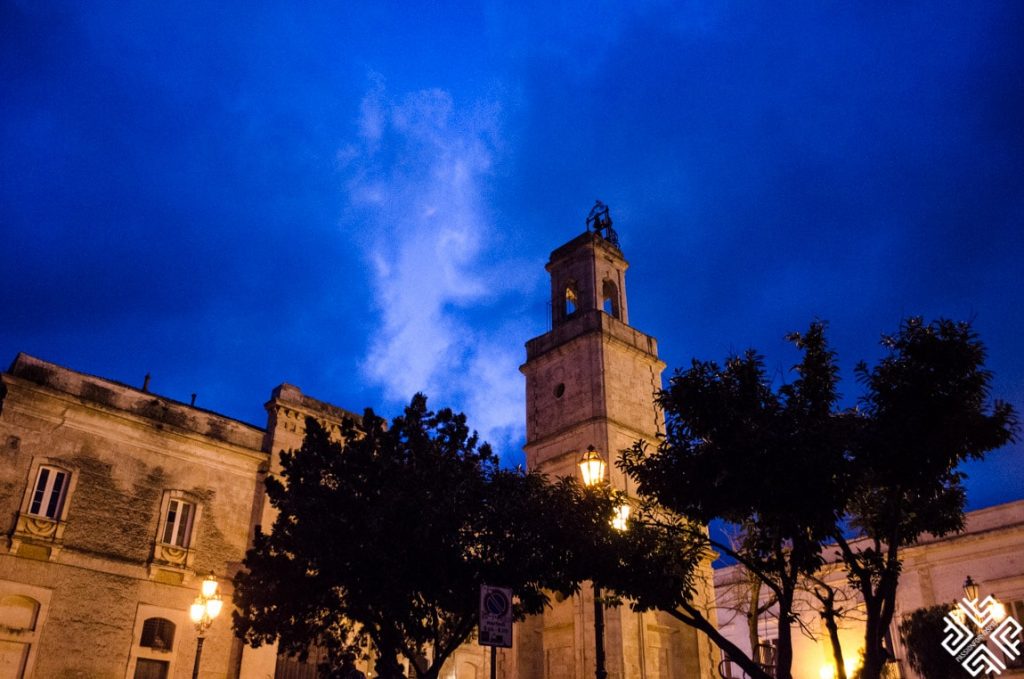
With many stories to share I will start with my Ultimate Guide to Puglia’s Cuisine — and for the foodie that I am, well read on and you will understand why you will be wanting to pack your suitcase and head to Puglia soon.
Where is Puglia?
The southernmost point of the Italian boot is where the region of Puglia is located. The land renowned for its agricultural activity, expansive plains, Terre delle Gravine, the famous canyons which dot the rugged landscape, traditional farmland, majestic coastline and the lush hilltops which produce some of the best Italian wines and olive oil.
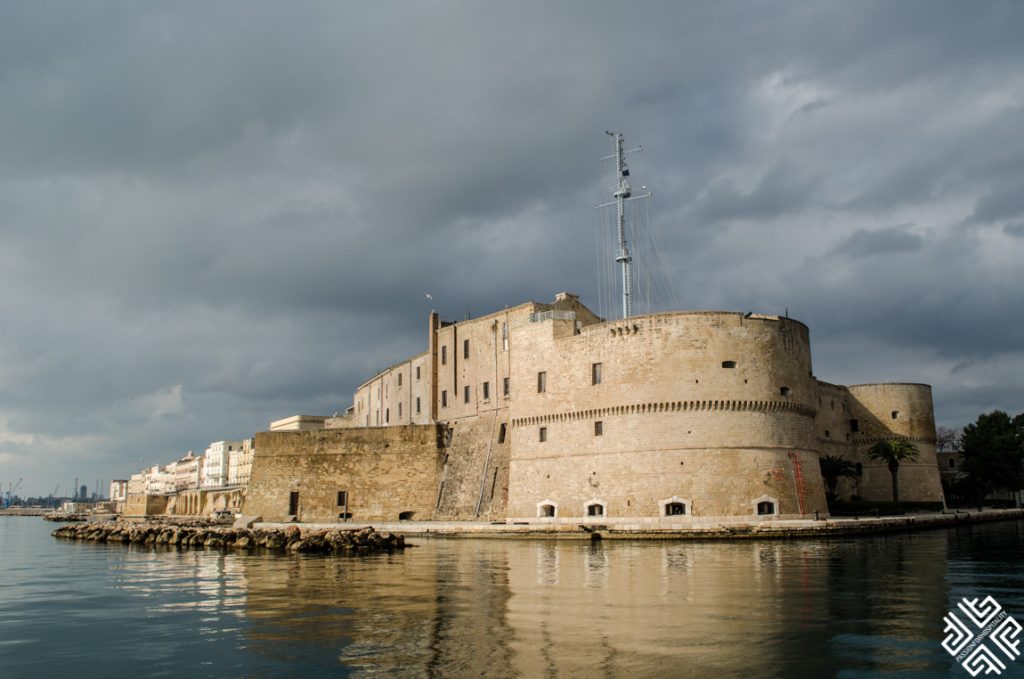
Set across from its neighbouring county Greece which has been my hometown for over twenty years — Puglia has been greatly influenced by the first wave of Greek settlers who named the coastal region of South Italy, Magna Grecia which translating from Latin means Great Greece. Many of the towns and villages resemble the Greek architecture with whitewashed buildings and flat roofs.
One of the distinctive elements of Puglia’s cuisine is the use of simple ingredients which have been passed down from generations dating back to the years of extreme poverty when nothing was left to waste. Numerous dishes are wheat based and a large number of Italy’s wheat production is in Puglia. Over our five day trip to Puglia we tried numerous exceptional dishes which you can read all about in my Ultimate Guide to Puglia’s Cuisine.
The Ultimate Guide to Puglia’s Cuisine: Where to Eat, Drink and be Merry
Day 1: Welcome to Ginosa
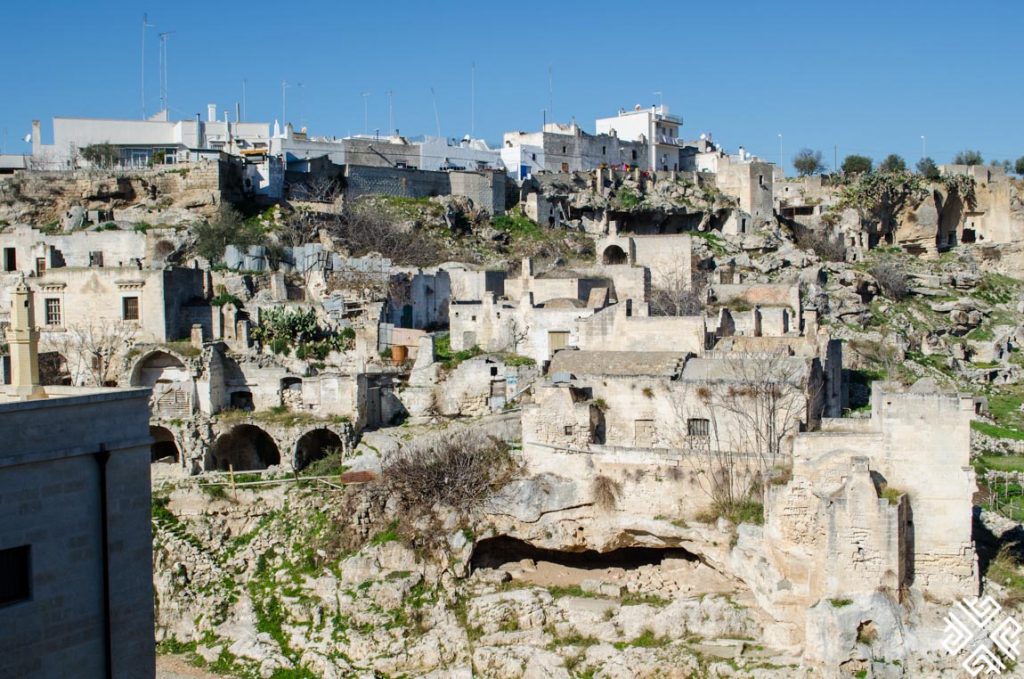
During our trip to Puglia we stayed in the charming town of Ginosa which is located approximately a little over one hour drive from Bari. Ginosa Marina is a small coastal town overlooking the Ionian Sea. We stayed in the heart of the historic centre in a beautiful Albergo Diffuso Il Casale, a traditional 5 room accommodation built inside original caves featuring all the modern amenities. Read more about my stay here.
The accommodation opens up to captivating views of the rocky gravine and its historical cave-houses. I will be sharing more about the region soon.
Alibi Drink & Food
Set across from one of the landmarks of Ginosa, Piazza Orologio literally translating as the Square of the clock, this small but picturesque square features a clock tower built in the 19th century. We were welcomed at the Alibi Drink and Food with a gorgeous spread of Puglia’s regional specialties.
We tried the capocollo which is a traditional Italian pork cut usually made from pork shoulder or neck, it is considered to be something in between prosciutto and sausage. We also had delicious salami which is usually sliced by hand and is made out of pork meat with fennel and pepper filling. Puglia like most of Italy is known for its cheese production. The cheeses of Puglia are mostly made out of cow’s milk.
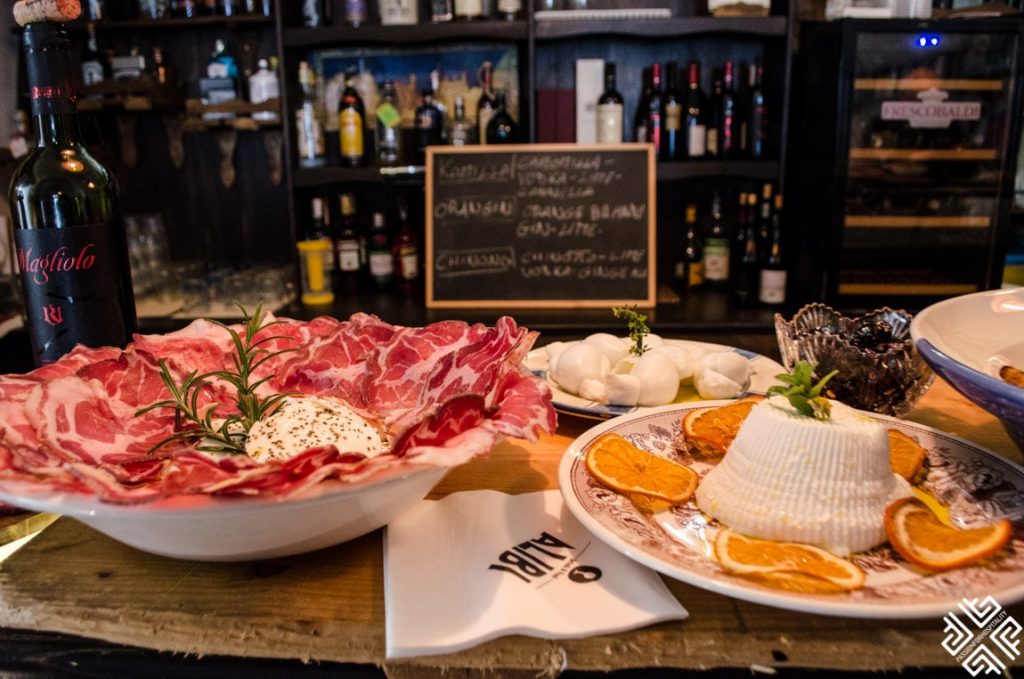
As our lovely host and guide throughout the trip — Dora explained, bread and eggs were the most common food in any Italian family. Every family would bake their own bread which was made in a communal village oven (forni) due to the size of the bread. As we later saw on our tour of Ginosa each family used their own wood carved emblem to differentiate the bread. It was used to stamp the middle of the round bread loaf.
No food was ever wasted, bread which was not consumed fresh would be used for the preparation of alternative dishes such as bread balls — one of Puglia’s specialties. Bread dipped into an egg mixture and fried until golden brown, simple but rather delicious.
Puglia’s cuisine is also rich in fruit and vegetable consumption and aubergine is used in numerous dishes. We tried the best aubergine slices which are made and preserved with olive oil, flavoured with garlic and mint. If you like aubergine, you will absolutely love this specialty in Puglia.
Another unique flavour which you will find in Puglia is turnip greens which almost looks like a broccoli leaf. They are commonly used in the preparation of a sauce for the orecchiette pasta. At Alibi we tried a different version made as a paste and served on bread slices. Wild onions is a typical Puglian dish — small in size and slightly bitter in taste called lampachone.
Our first introduction to the region’s renowned wine Primitivo happened on this lovely Friday afternoon at Alibi together with the best hosts Gino, Sergio and Dora — the next few days we wined and dined, made great friends and dubbed ourselves — Team Primitivo (insider’s joke). This fantastic red wine is one of the best discoveries you will make if you are a wine lover. The region’s primitivo grape variety is used to make strong red wines.
Forno Ottocento
When it comes to traditional pasta making and the famous orecchiette pasta, my advice to you is to never mess with an Italian grandmother — she takes her pasta making technique very seriously.
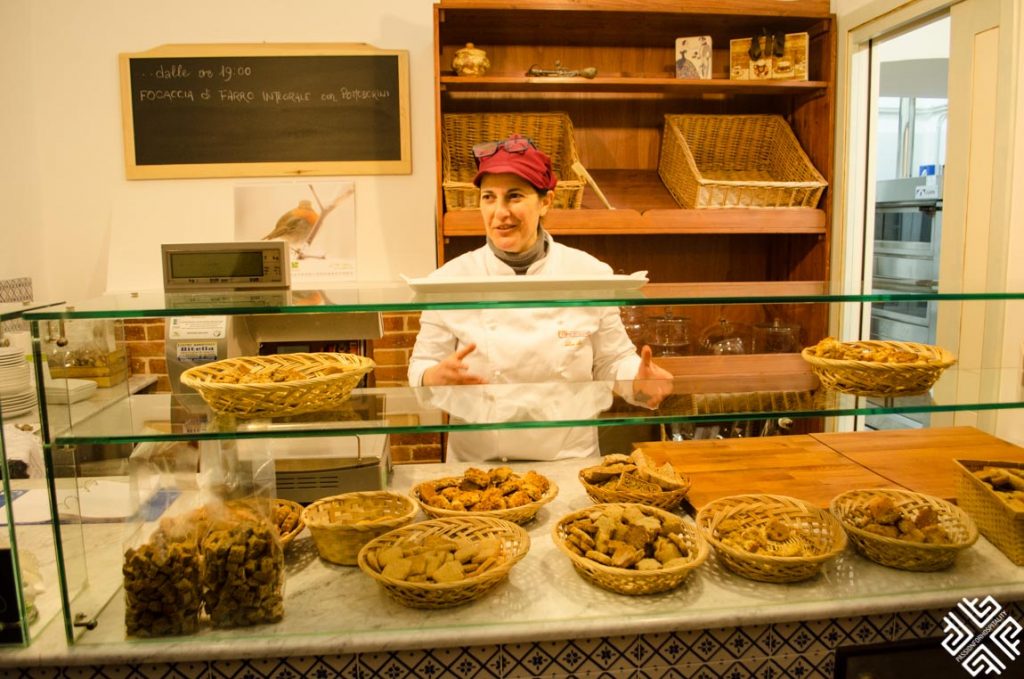
On our first evening in Ginosa we were invited for a one-of-a-kind traditional pasta making experience at the XIX century bakery Forno Ottocento. Puglia is famous for its typical pasta called orecchiette which resembles little ears, because of its particular shape. We joined grandmother Orsola for a hands on pasta making experience in her kitchen. It may seem simple but in fact the secret lies in the technique and practice definitely makes it perfect, or not.
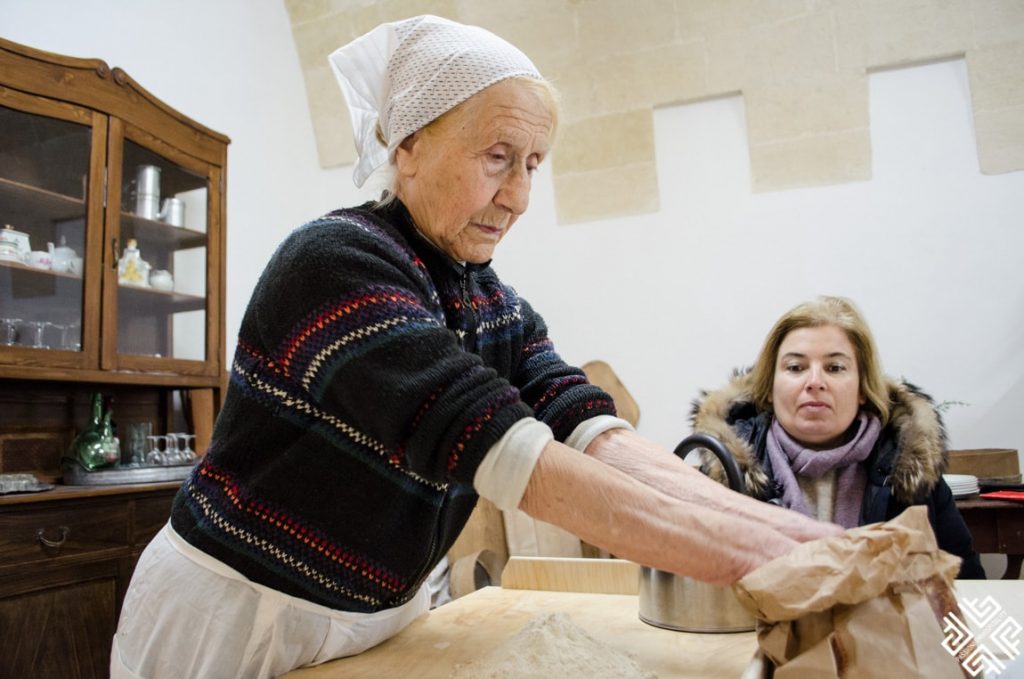
This pasta is made out of flour and water, and requires continuous mixing until it turns to a nicely shaped dough. You then cut it into pieces which you roll like a sausage and then cut it up into smaller pieces. By using a knife you kind of roll it like butter and then you make it into a perfect little ear shape. May sound simple but grandma Orsola was kind of shocked with our clumsiness at times.
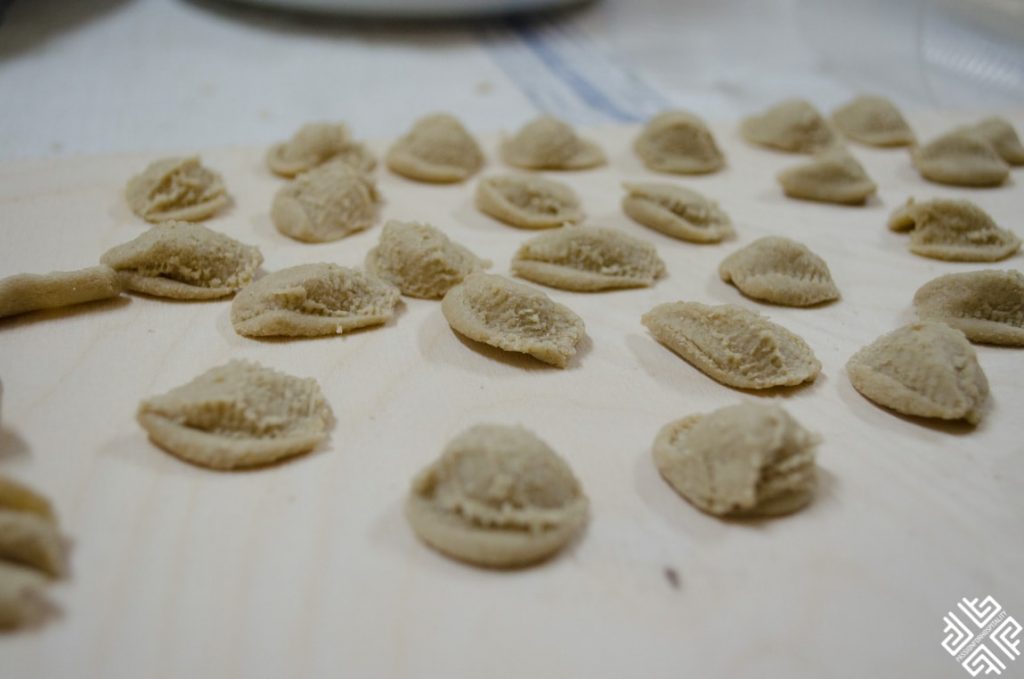
After our persistence to master the cooking class we gave up and enjoyed a wonderful family meal prepared by the family. Orsola junior who is the eldest granddaughter completed her studies in Culinary Arts and assists her mother Lucia and grandma Orsola in all the preparation adding an artistic touch to the traditional family recipes. The younger daughter Greta, was joyfully reading her colour book and occasionally helping her family.
The authentic Italian family dinner consisted of a five course meal. As starters we were served with appetisers like cold cuts, pecorino cheese and ricotta, fig jam and amazing bread made by grandmother Orsola who bakes different types of breads daily — filled with sun-dried tomatoes, pistachios and walnuts.
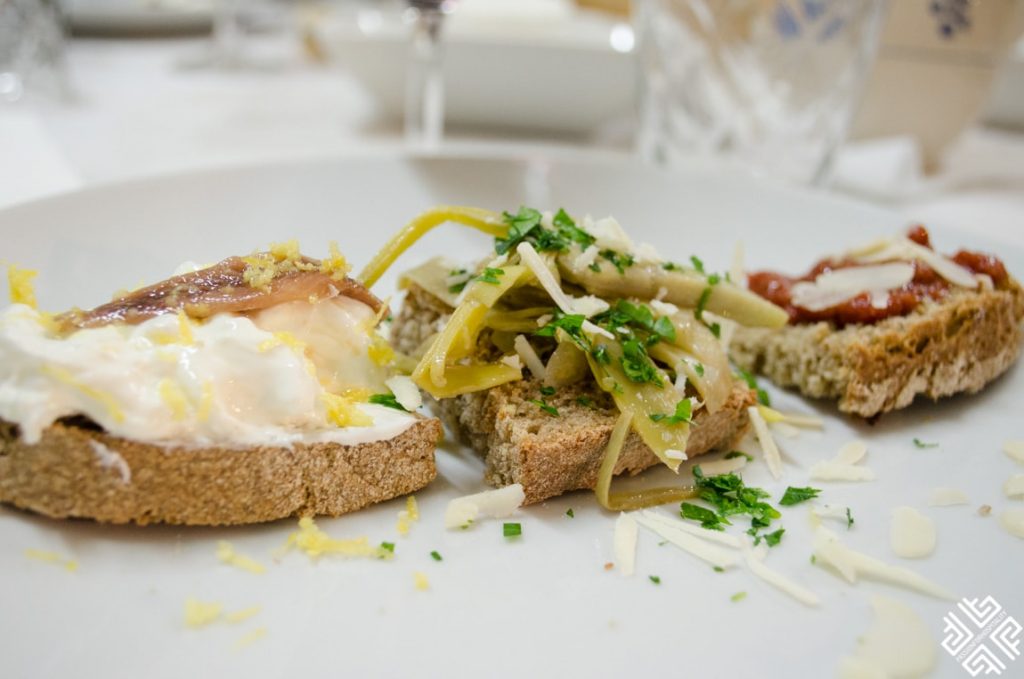
Then came three different slices of bread with toppings. The barley bread served with artichokes, parsley, topped with cheese. Fresh tomato with almonds on a wholegrain bread and the third was granoarso (toasted grain) with Stracciatella cheese (mozzarella cheese mixed with cream) lemon zest and anchovies.
The specialty dish was of course the orecchiette pasta which was served with a delicious sauce made of cardoncelli (mushrooms) mixed with pumpkin and fresh parsley. For the main dish we were served with the most tender pork which is marinated for 12 hours before cooking and it was beautifully accompanied by quince puree with slices of fresh fennel.

For dessert we tried the sweet bread-like buns topped with freshly made orange sauce.

The family produces their own flour which they grind using a traditional flour mill that has been passed on from one generation to another.
It was a wonderful experience to learn about the family tradition of making the famous orecchiette pasta and to enjoy the most delightful dinner in a cozy Italian family environment.
Day 2: Taranto, Gravina di Laterza and Laterza
Traditional masseria Agriturismo Il Praedio della Reale
Puglia is known for its unique type of accommodation which is traditional farmhouses or masseria in Italian which have been renovated and turned into hotels. On our second day we visited Agriturismo Il Praedio della Reale set in the area of Taranto, a family owned farmhouse that grows biological fruits and vegetables.
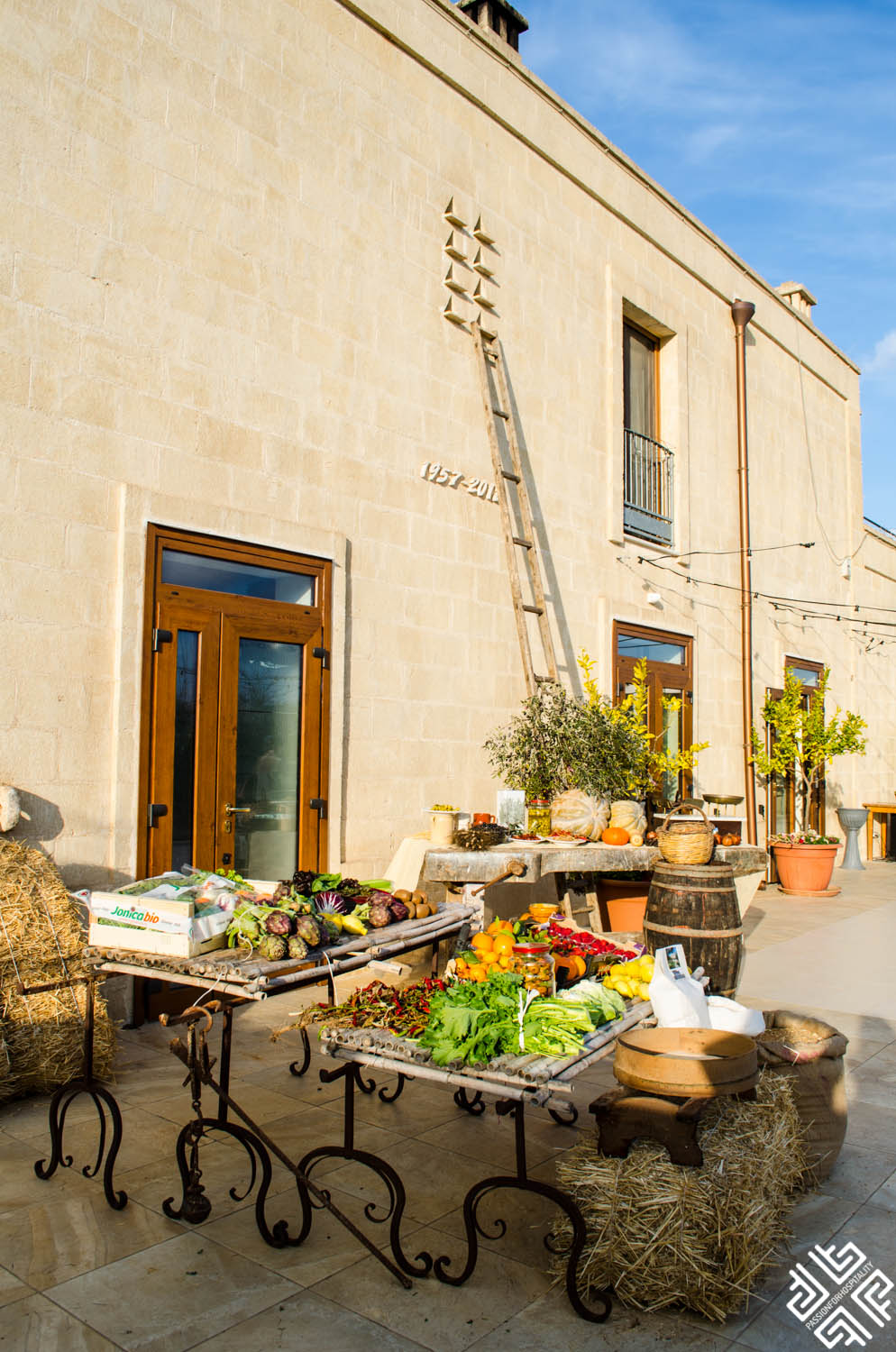
The landscape is dotted with numerous orange and olive trees and the area is often referred to as the California of South Italy.
An ideal place to enjoy the rustic charm, fresh air and home grown richness of Italian food. Upon arrival we were welcomed by Domenico and his wife Tiziana who had set up a beautiful display of their farm grown produce — a colourful selection of fruits and vegetables which looked like a picture perfect postcard from Italy.
We were delighted to see all the farm animals including the 2-day old baby goats. The older goats were out and about having their afternoon snack munching on fresh salad leaves, a pig was joyfully enjoying her afternoon nap while a pony decided to engage in an afternoon run, making circles around the vineyard.
We ended our visit with a tasting of freshly made orecchiette. This was a slightly different version from the one we tried at Forno Ottocento. It was made with a sauce of cime di rape, the turnips and Stracciatella cheese.

The masseria also features accommodation making it an ideal choice for guests looking for an authentic agrotourism holiday experience in a picturesque Italian setting.
Our next stop just around sunset was to discover the beauty of the Gravina di Laterza which is 200 meters deep after which we headed to the town of Laterza where we admired the impressive Palazzo Marchesale and the Museo della Maiolica — which features a collection of a refined, white-glazed pottery of the Italian Renaissance. Our evening ended with a dinner in a traditional butcher shop.

Macelleria Rosticceria Tamborrino
Set in the heart of Laterza this traditional butcher shop is one of the best in the region. From the outside it looks like a typical local butcher shop but as you enter inside there is a separate dining room set on two levels.
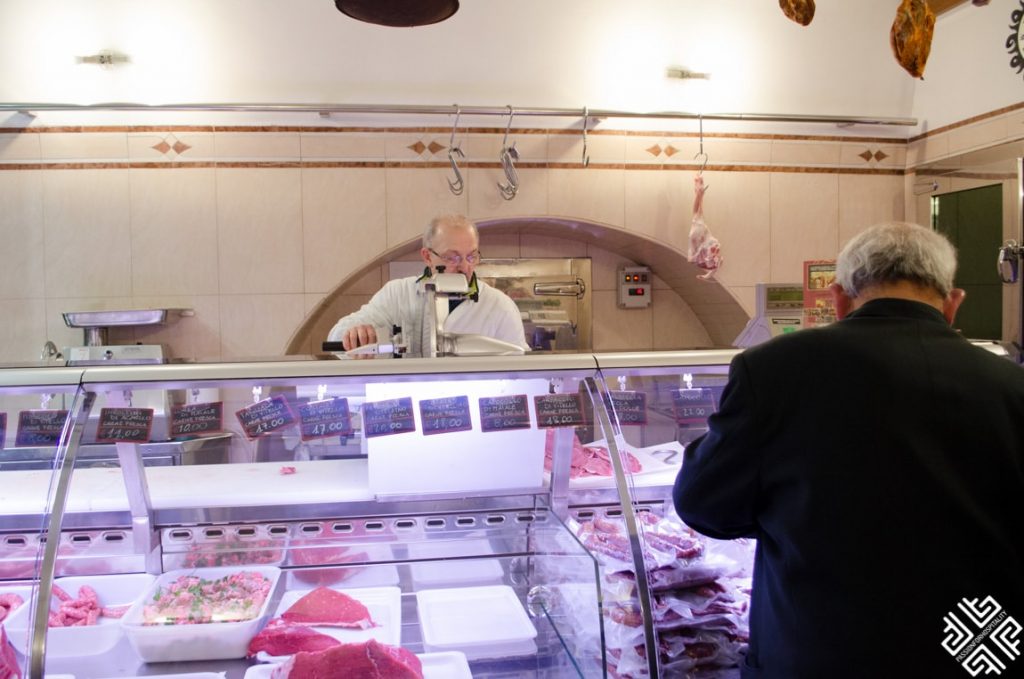
We were there just after 8pm on a Saturday night, the place was still empty — only one gentleman was stocking up on fresh meat cuts for the Sunday lunch feast. Italians take their family Sunday lunch seriously — the pleasure of eating together is rooted deeply in the Italian culture and most families still get-together for a traditional Sunday meal.
As we entered the restaurant all the tables were already set up, ready to welcome the guests — Dora warned us that in a matter of minutes the place would be filled up with the locals coming to enjoy their Saturday evening out. She was right, people started flooding in, couples, friends and families with young children. By the time we were seated as enjoying our starters the atmosphere was already lively.
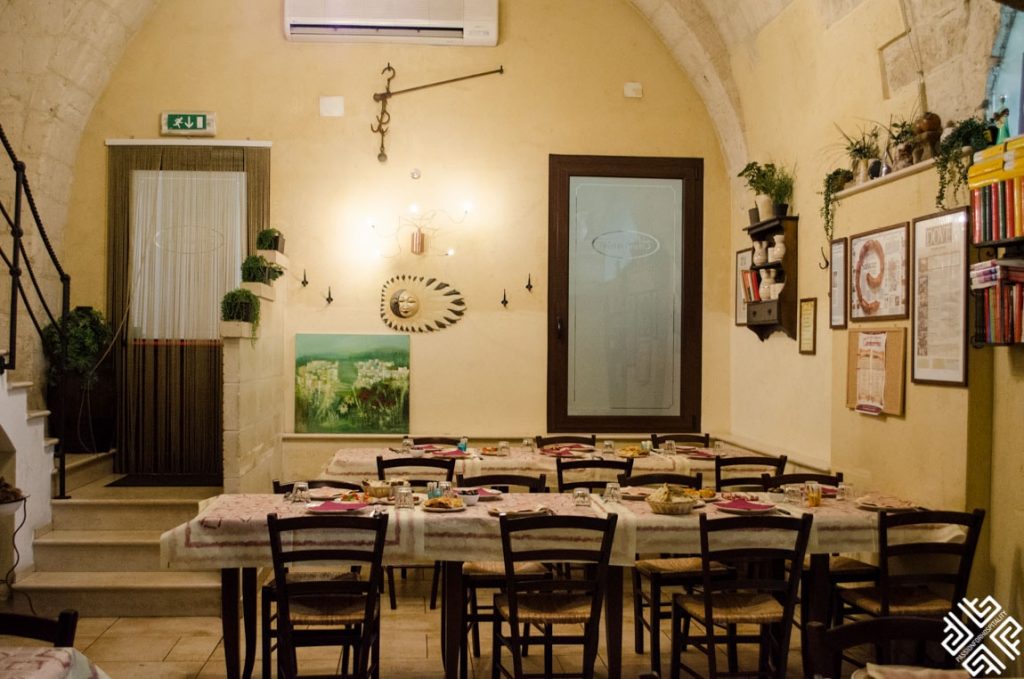
Domenico Tamborrino the owner of the restaurant was there to serve us the freshly grilled meats which he prepares on skewers in a wood fired oven.
Since 1950 Domenico has been running his shop and delicatessen serving the finest meats which are locally bred in the region of Puglia. One of the popular delicacies that Domenico serves are small rolls made of grilled offal (liver, spleen, and small intestine).
Day 3: Mottola, Crispiano and Massafra
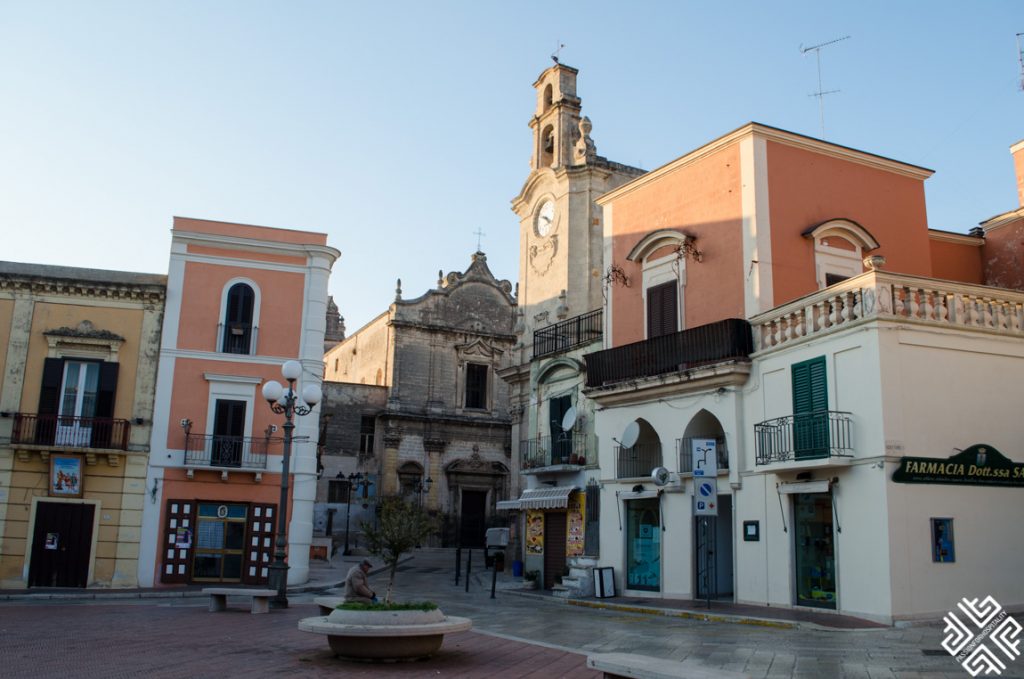
Our morning program started with a tour to discover Puglia’s famous Rupestrian churches to witness the best surviving and most complete examples of rock-cut settlement in the Mediterranean region which were built in close harmony with nature. We visited the Rupestrian Church of Saint Nicolas with gorgeous frescoes that span between the period of 5 centuries (9th-14th). We also visited the Rupestrian church of Saint Gregory which also dates back to the 9th century with the most impressive Pantocrator (Almighty God) fresco taking the central stage.
The program followed with a visit to a gorgeous Masseria Amastuola Wines & Resort where we tasted the famous Primitivo wine and enjoyed a delicious 6 course lunch and wine pairing. We then visited Massafra where we explored the famous Rupestrian Churches of Candelora, Sant’Antonio Abate and San Leonardo. In the evening we returned to Ginosa to enjoy a fantastic wine tasting experience at the Domenico Russo with a very knowledgeable sommelier.
Masseria Amastuola Wines & Resort
This gorgeous property is set on a plateau which rises 210 meters above sea level. Surrounded by 170 acres of olive trees and vineyards it is the perfect example of a traditional masseria. The impressive agricultural history and the viticulture tradition of this place dates back to the Magna Graecia Age and since the farm has been acquired by the Montanaro family in 2003 they continue to support the research and excavations which are carried out under the supervision and control of Superintendant for Puglian Archaeological Heritage, the University of Amsterdam’s Centre for Archaeology. A book presenting the results of the research and studies has been published, edited by Gert-Jan Burgers and Jan Paul Crielaard — titled ‘Greci e indigeni a L’Amastuola’.
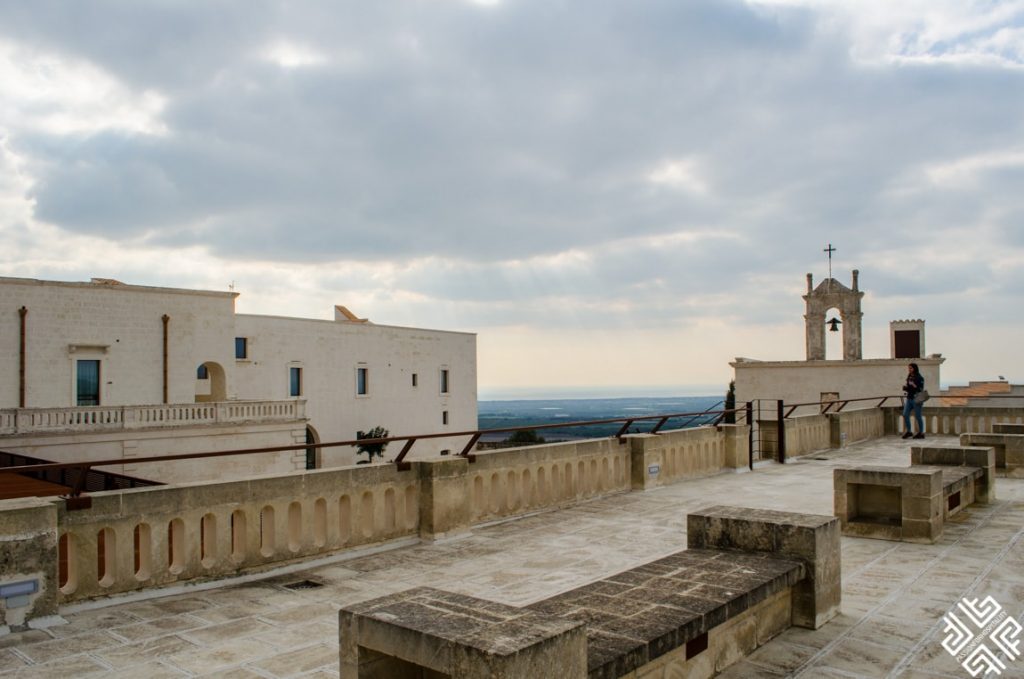
The impressive history of Masseria Amastuola dates back to the early 15th century when the property was under the possession of Giovanni Antonio Orsini, Prince of Taranto. Over the centuries it had passed through the hands of various owners yet its biggest expansion and prosperity was noted in the eighteenth century.
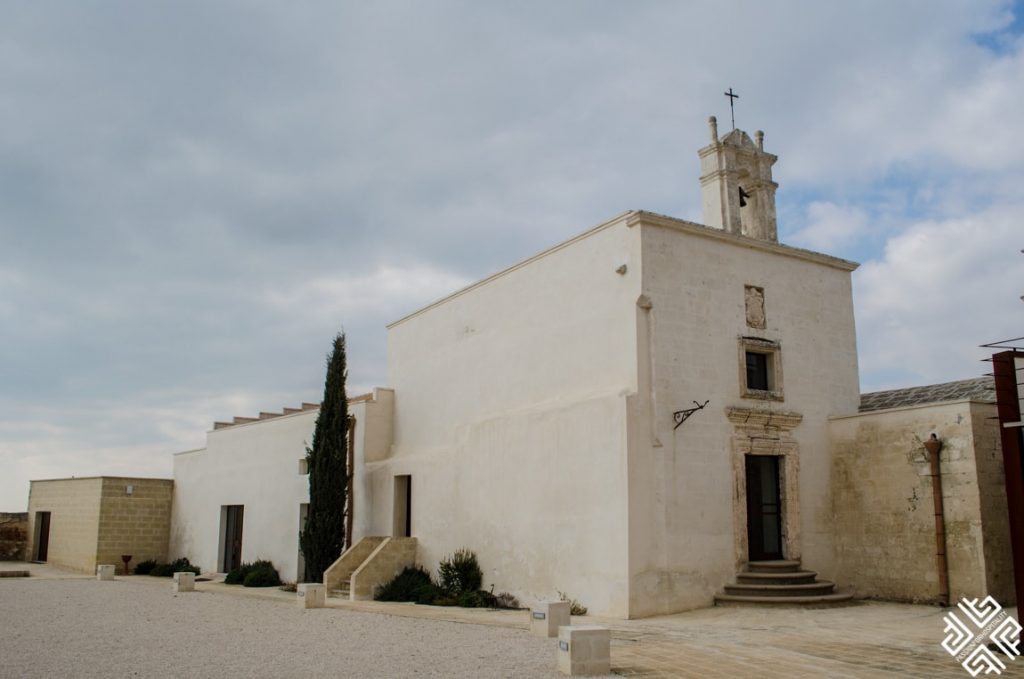
During the olive harvest season which took place in November and December villagers would flock to the masseria to collect the olives and would make it their home base for a little over a month. As a result they built a church which they used for their religious activities. A small 18th century Church can be found on the grounds of the property until this day.
We were met and guided by Filippo Montanaro who is one of the owners and Hotel Manager of this glorious estate. As Filippo explained the farm is incorporated inside the Regional Park ‘Terra delle Gravine’ and belongs to the area of the ‘One hundred Farms’ in Crispiano. The area surrounding the masseria is rich in natural vegetation where one can find maritime pines, rosemary, thyme, wild strawberry, blackberry, and the country rose Calaprice. The aromas and fragrances of these vegetations characterise the distinct flavours of the organic grape varieties cultivated in the area.

The 18th century wine resort is a feast for all the senses. The ancient farmhouse has been turned into a luxurious property where attention to detail shines through, modern, minimalistic and elegant — Masseria Amastuola Wines & Resort features 9 guestrooms and suites which beautifully coexist in an organic farm environment.
After exploring the resort we had a wonderful feel of the place and now it was time to savour their renowned cuisine.
First we started off with a wine tasting and appetisers at the wine-bar area of the resort. The Masseria Amastuola produces 11 organic wine labels, we had the Bianco Salento which is made out of fiano and malvasia grape variety.
Lesson learned, never indulge on too many appetisers — this was our conclusion as we were invited into a dining area to enjoy a six course meal with wine pairing.
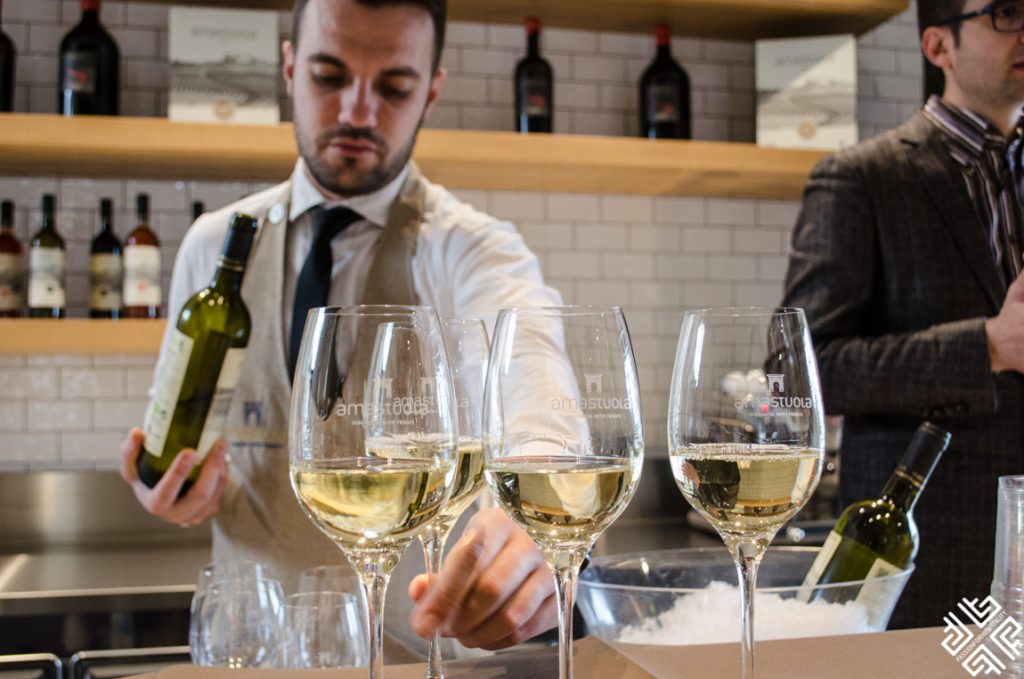
The menu was designed by Patricia Girardi — we were introduced to a sensational blend of flavours, aromas and eclectic presentation.
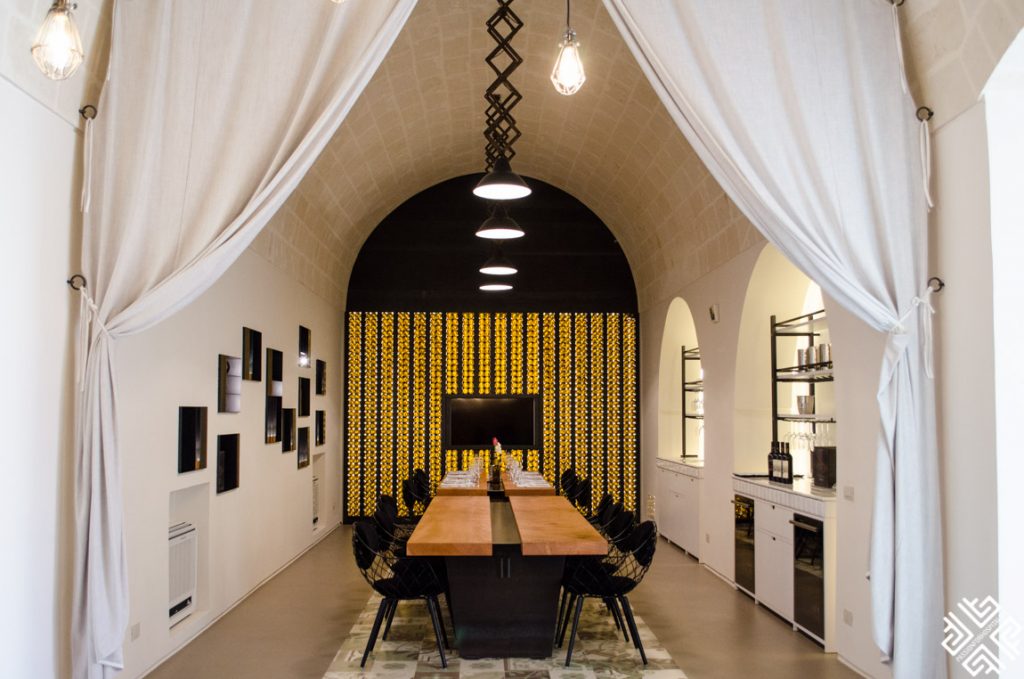
For starters we enjoyed shrimp covered with a thin layer of alga nori served with a cocktail sauce. It was paired with Calaprice white wine a blend of three grape varieties: Sauvignon Blanc, Chardonnay and Fiano. Refreshing and fruity with flavours of pineapple, pear and golden apple.
Then followed the swordfish accompanied by provolone cheese made out of cow’s milk with origins from South of Italy. It has a firm texture and a mild, smoky flavour.
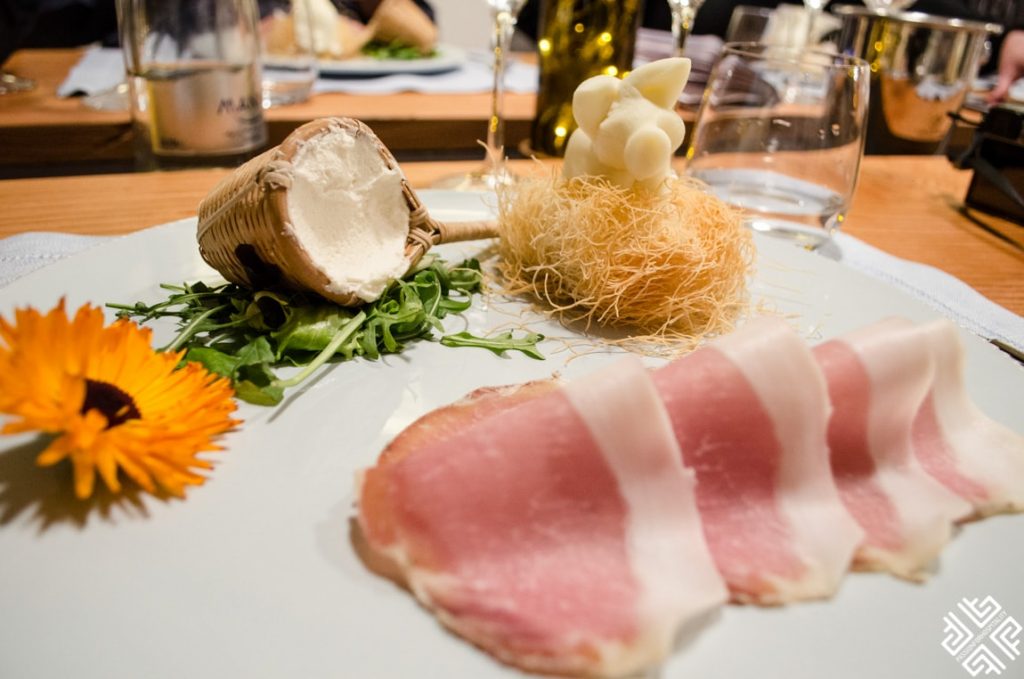
The next dish was a masterpiece — a food replica of a farm on a plate with a basket filled with ricotta cheese, a pig made out of Scamorza cheese, ham and kadaifi which was used for edible hay. I honestly haven’t seen anything delightful as this. For the wine pairing we moved to Primitivo and tried two exceptional varieties — the PRIMITIVO made from organic grapes and the exquisite Primitivo Centoassi which translates as the one hundred stones.
For the fourth course we were served potato soufflé with cheese and turmeric. Then came a colourful bowl with a ravioli stuffed with minced beef served in a pumpkin sauce.
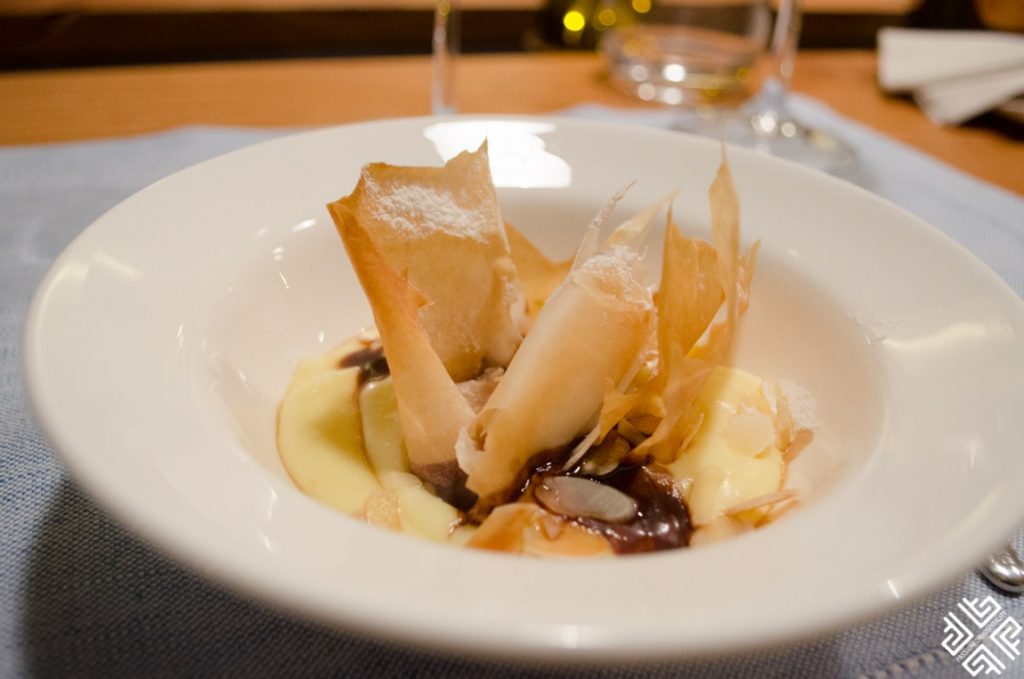
For dessert we had a light creamy dessert, a mixture of vanilla and chocolate with pieces of phyllo dough, sprinkled with almonds. To top of our sensational lunch we tried a sweet dessert wine — Dolce Vitae, refreshing and fragrant it was a perfect ending to our wonderful visit at Masseria Amastuola Wines & Resort.
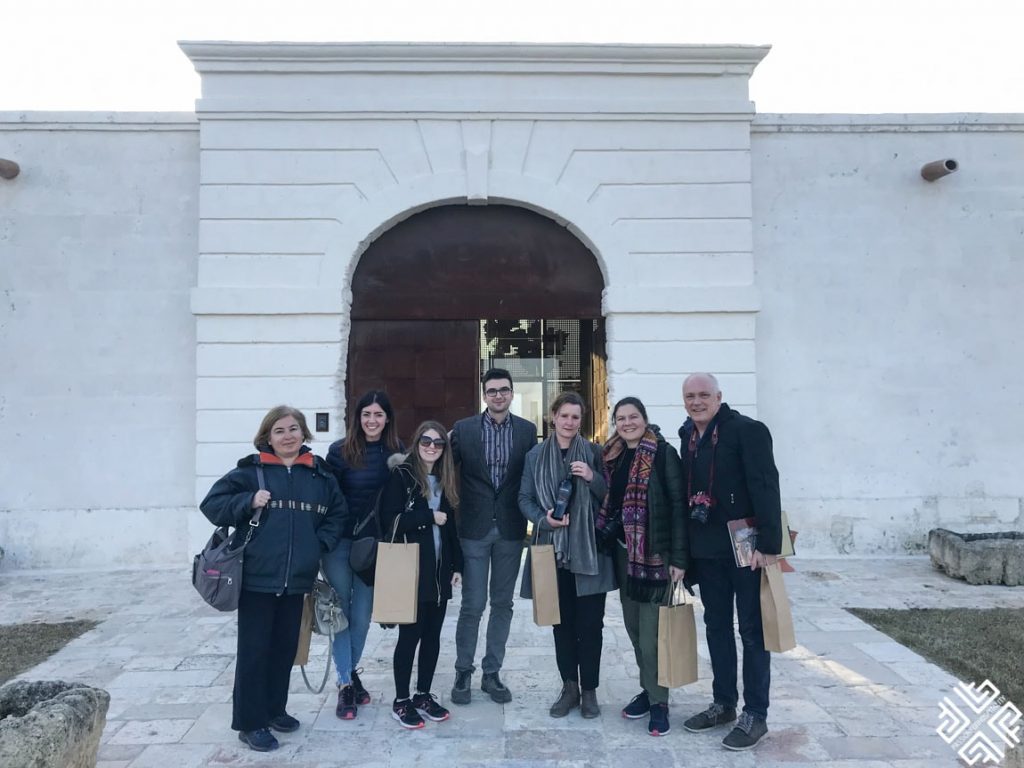
Visitors can enjoy a selection of wine tours and wine tastings with light lunch or dinner. Prices start at 15 Euros per person. For more information click here.
Domenico Russo Winery in Ginosa
The winery of Domenico Russo was established in 1998 in the countryside of Ginosa, around the area of Taranto. The family’s passion for wines has resulted in the production of exceptional, first-class wines — with notable native varieties such as PRIMITIVO and Malvasia.
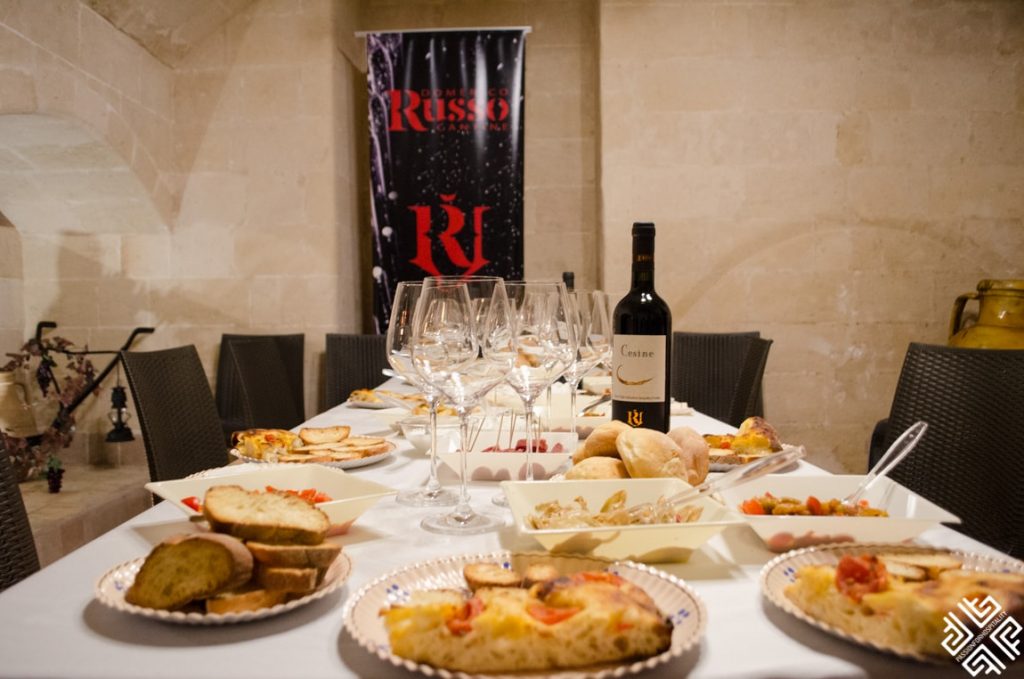
We visited the showroom of Domenico Russo for a unique wine tasting experience which was conducted by a very knowledgeable sommelier Antonio Vestita who holds exceptional experience by having worked as the sommelier at Alain Ducasse restaurant at the Dorchester, London.
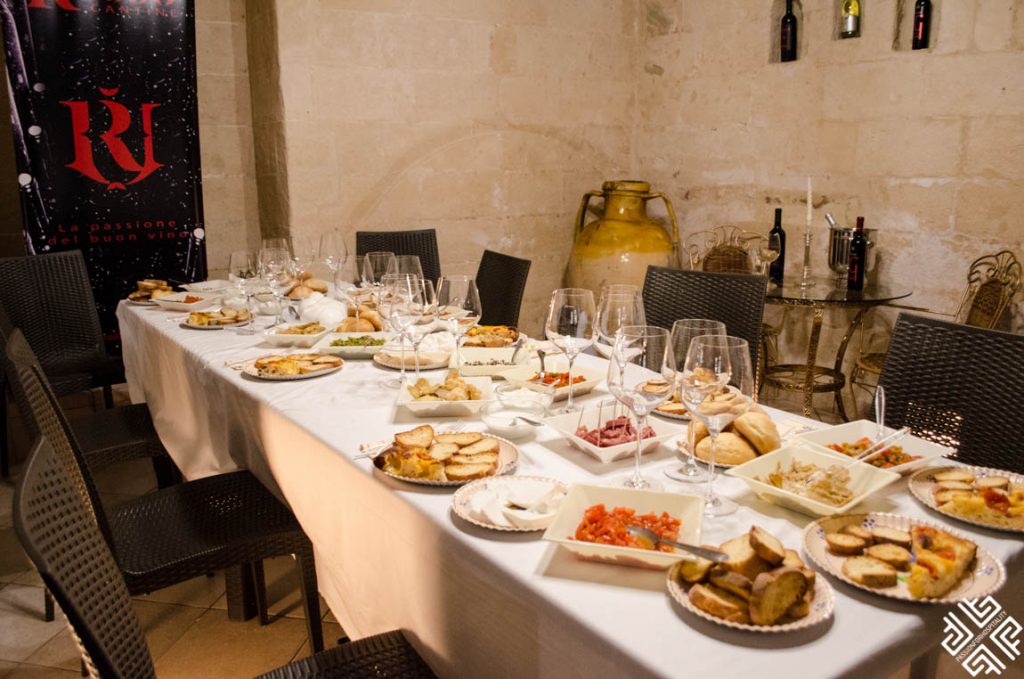
For starters we enjoyed their light sparkling wine Gocce di Perle made out of 100% Malvasia bianca grape variety, a fruity taste with a hint of unripe apple. Then we had the Verdiano produced out of 100% Malvasia bianca grape variety with a green apple and lemon texture.
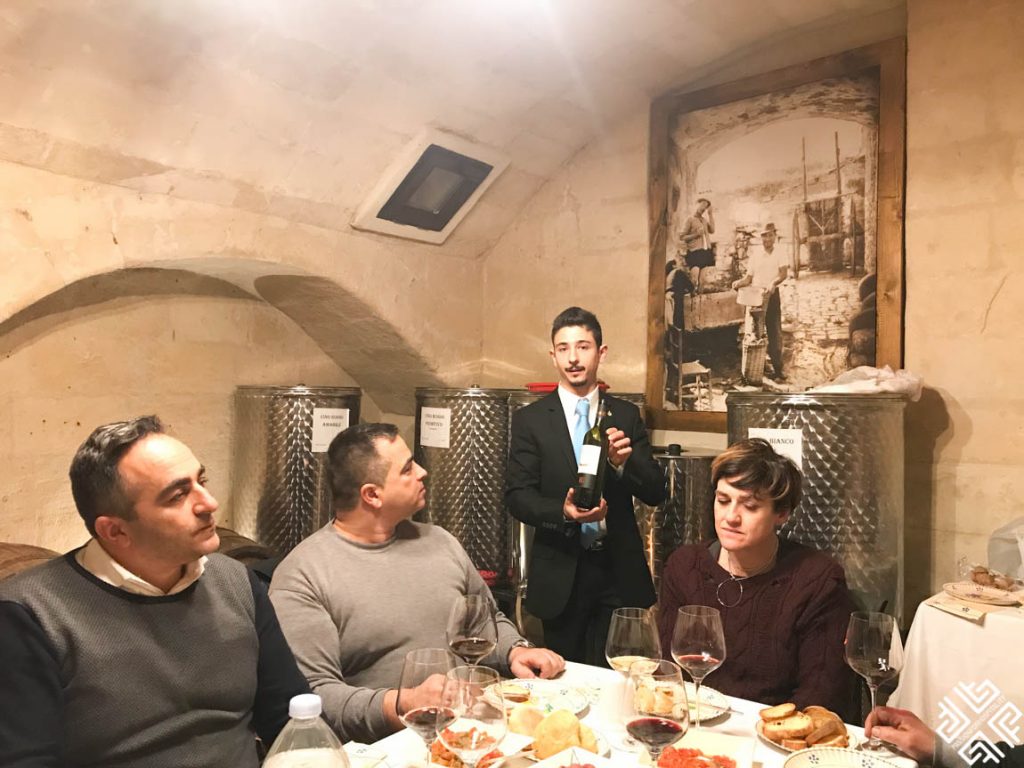
The wine tasting was paired with a rich spread of traditional delicacies among which were the amazing aubergines which are preserved in jars with olive oil and vinegar. We also had the fantastic Stracciatella cheese, cold cuts, and the famous focaccia which is a Pugliese pizza like bread. It is a type of street food famous in the region of Puglia and it is enjoyed at all times of day. There are made with different fillings, most common are with tomatoes and anchovies.
The mozzarella in Puglia is braided into various shapes, almost resembling a braided bread loaf which is then cut up into generous slices and of course sprinkled with olive oil. We also had fried zucchini, freshly grated tomatoes which you add on top of the fresh bread. A typical feast in Puglia consists of plenty of delicacies, good wine and great company.
After the white wines we switched to our favourite distinct grape variety — famous in Puglia, Primitivo. Domenico Russo produces three different reds, the Marrate which is a Protected Geographical Indication wine and goes perfectly well with sausages, salami and seasonal cheeses. The Il Magliolo which is 14,50% alcohol by volume and is paired with roasts, red meats and spicy cheeses. The Genòse is usually served with desserts and dry pastries.
Day 4: Ginosa and beyond
Panificio Piccolo
In the morning we made a stop at Ginosa’s traditional bakery which is located right off the corner from the Albergo Diffuso Il Casale.
Panificio Piccolo which translates as the small bakery from Italian is operated by Peppino who continues his family tradition of baking bread, focaccia and other sweet delights. The business was started by his parents Damiano and Isabella, today Peppino continues their legacy of traditional bread making.
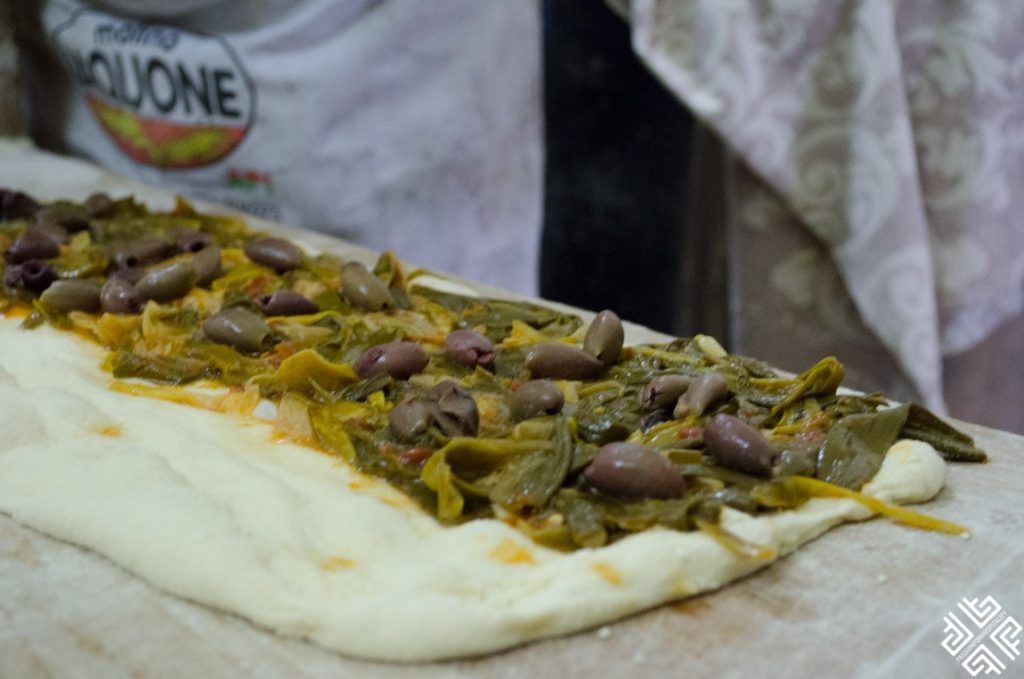
Although my Italian is very poor — non existent actually, Peppino’s passion was evident in the way he spoke about his business. He made sure that we tried some of his freshly baked delights — in fact he insisted that we wait as he prepared the buns in his wood fired oven.
There was a selection of trays filled with various focaccia lined-up on a bench waiting to be baked. It was a rewarding experience to find ourselves in the middle of a traditional bakery which produces artisan products based on recipes which have been passed down from one generation to the next.
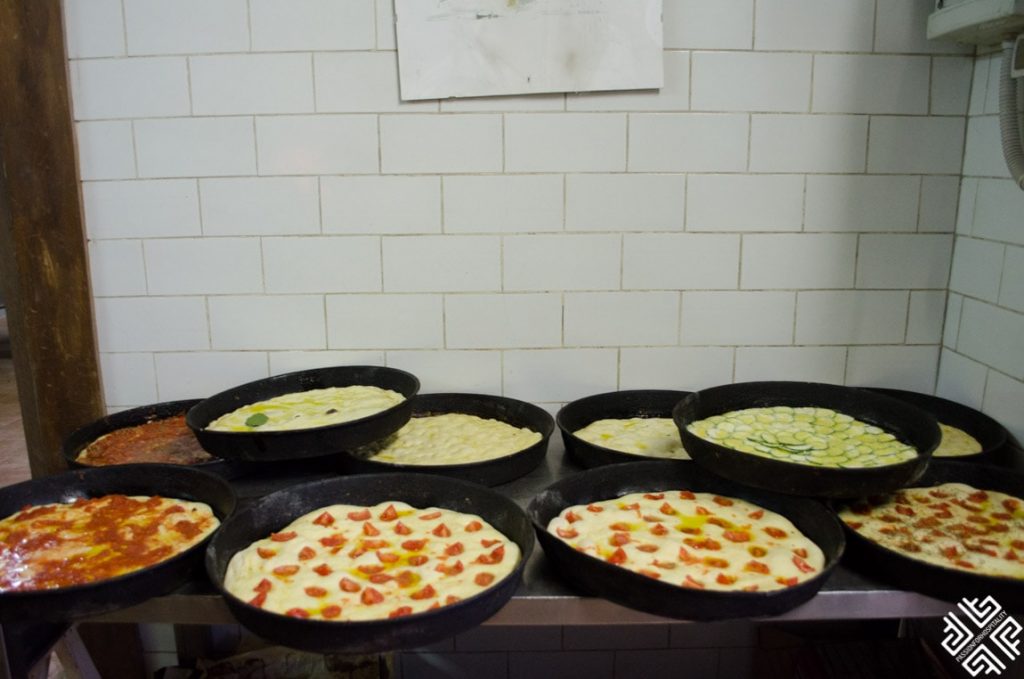
Masseria Savoia Resort
Our goodbye gala dinner took place at the Masseria Savoia Resort set in Ginosa Marina where we arrived in the evening to enjoy yet another exceptional Italian feast. Set amongst orange tree gardens and olive groves the masseria has a large seasonal outdoor pool which adds a touch of romance to this traditional rustic environment.
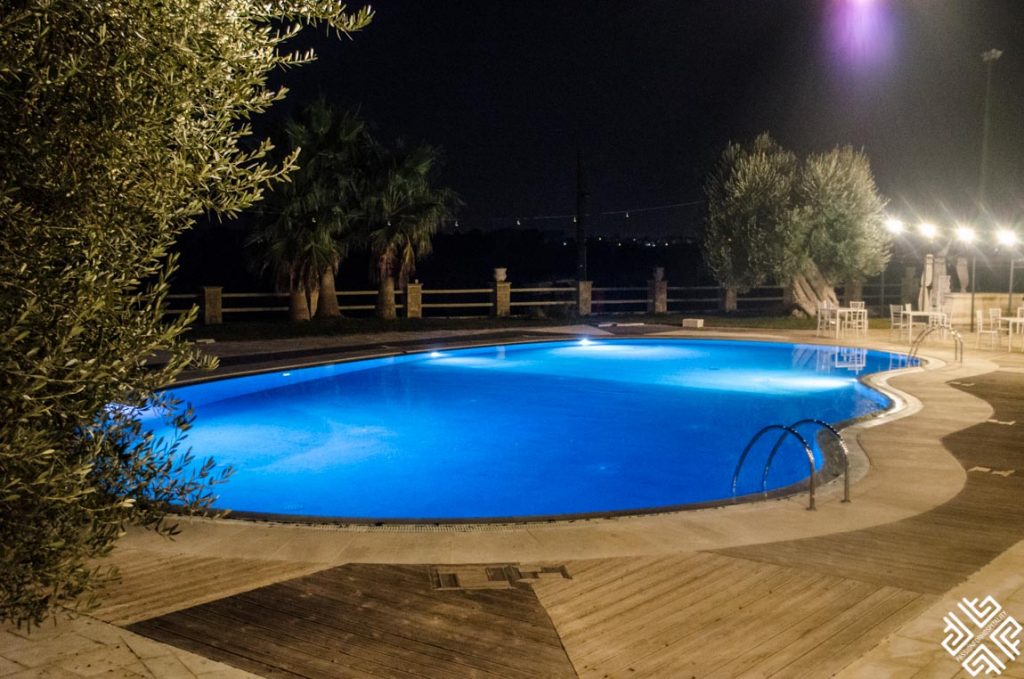
The elegantly decorated dining room is an ideal place for weddings and events. The traditional dome like ceiling is a particular feature of a casa grotta which are the famous cave houses of the region.
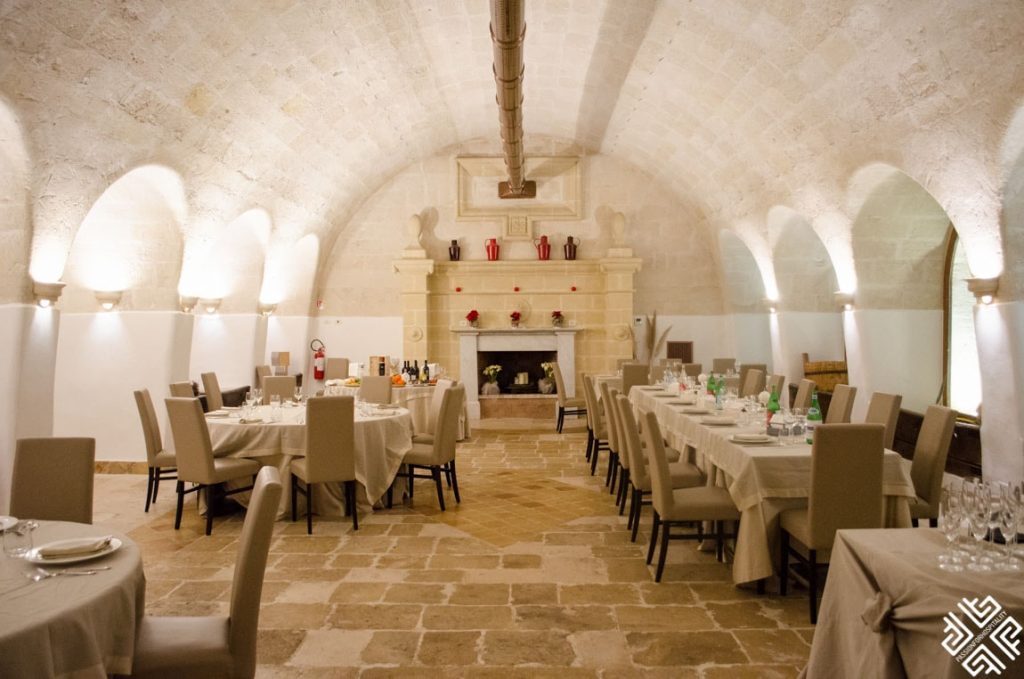
For starters we enjoyed a selection of fried appetisers accompanied with sparkling white wine, before we proceeded to the long dining table to savour the rich menu which was prepared for our special event.
As you would have already realised Italians love to eat, and to eat well. The rich menu and selection of dishes was once again beyond generous. For starters we tried the marinated pumpkin served with pomegranate seeds, in fact this dish was sublime — this was the first time I tried raw pumpkin and it was sensational. Other appetizers included timbale vegetables, local cold cuts, selection of fresh and ages cheeses with jams, rocket and parmesan stuffed mushrooms, corn tarts with seafood and provoke cheese, stuffed squid and a beans and chicory dip.
For the first course we were served with pacherri which is a large tube pasta filled with scorfano fish cooked in a fresh cherry tomato sauce topped with pumpkin cream and Martina capocollo. For the second course we enjoyed a sea bream fillet with vegetable caponatina.
The meal was topped off with a fabulous pineapple cannoli filled with milk cream and diced fresh seasonal fruit. As for the wines we had a refreshing and crisp rose 12 e mezzo produced by the younger generation of the Varvaglione family who have been producing wine for three generations since 1921. This specific label is produced with a modern approach combining the new trends and millennial drinking styles.
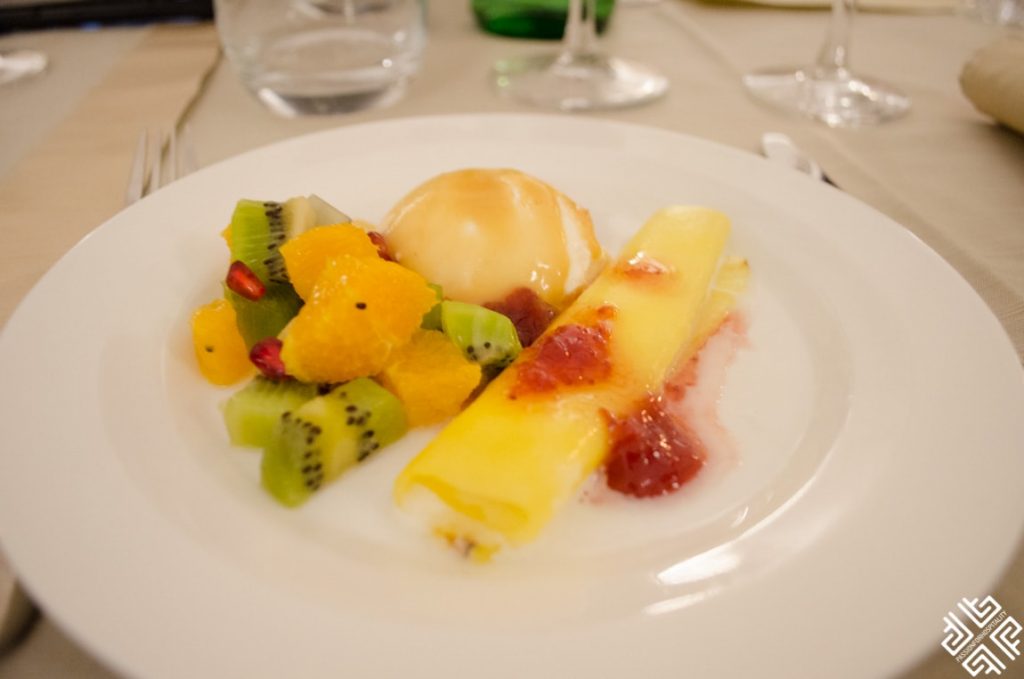
A Puglian meal cannot be complete without the fine Primitivo, here we tried another label Papale Primitivo di Manduria — a deep red wine with intense aromas of fruit jam, blackcurrants, cherries, mulberries, cocoa and liquorice. The wine has received numerous recognitions in various international awards ceremonies including the Gold Medal at the AWARD Berlin Wine Trophy in 2013.
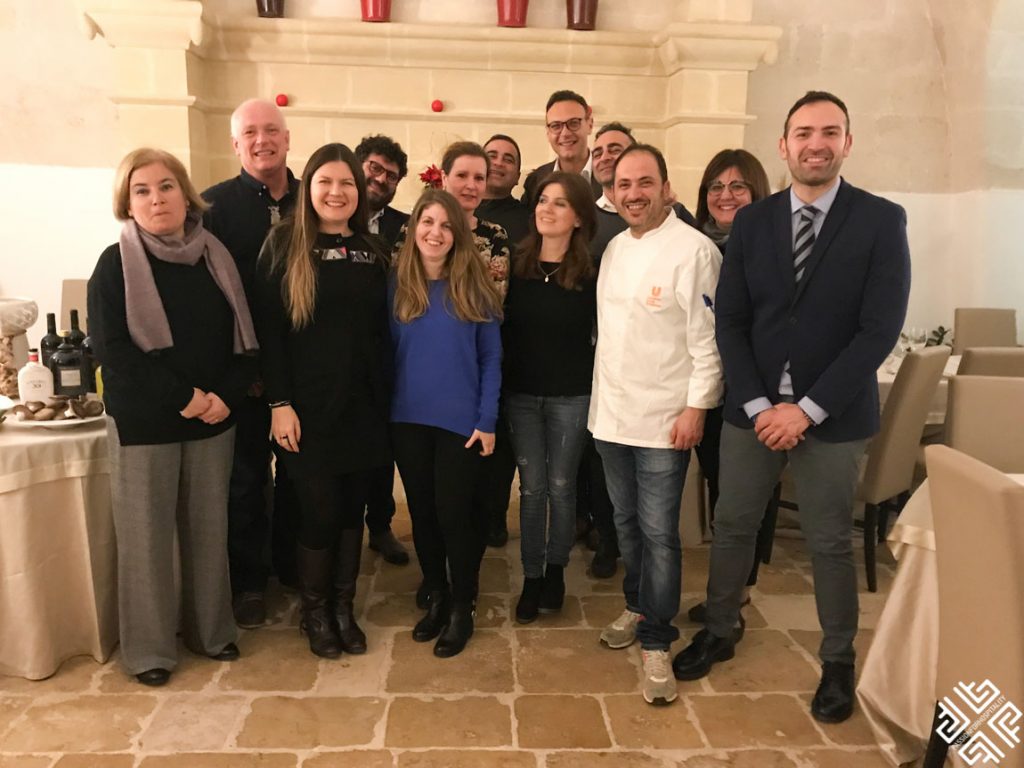
I hope that you have enjoyed reading this comprehensive guide to Puglia’s cuisine filled with photos which I was taking over the course of four days. If you haven’t been to Puglia I hope that this post has inspired you to plan your next trip to this breathtaking region.
So who is team Primitivo? Our fantastic group of travel writers and bloggers (Kate, Sonia, Thomas, Chrysoula and I) and our most welcoming hosts Dora, Gino, Sergio and of course everyone else who welcomed us during our visit to discover Puglia. Thank you for this magical experience, from the bottom of my heart. Stay tuned as I will be sharing more about our trip, from all the places we visited and all the activities that we participated in — dolphin spotting and hot air ballon ride coming up soon.
Pin for later…
The post The Ultimate Guide to Puglia’s Cuisine appeared first on Passion for Hospitality.






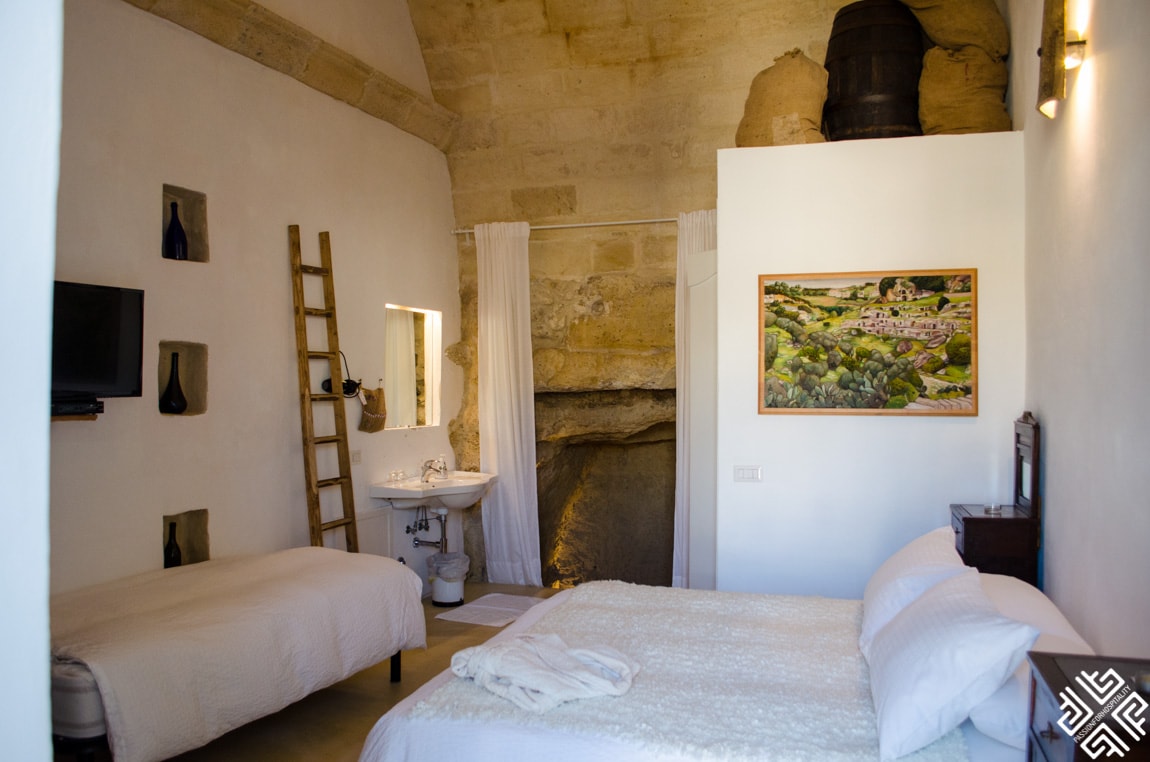
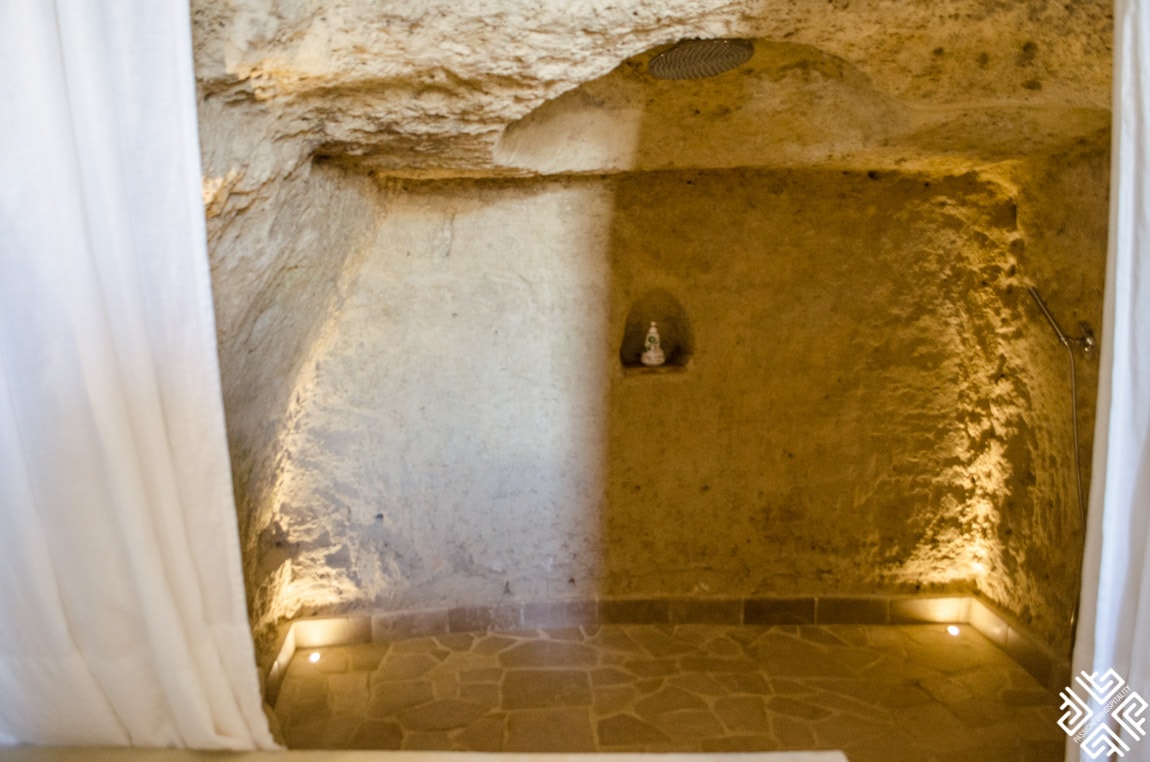
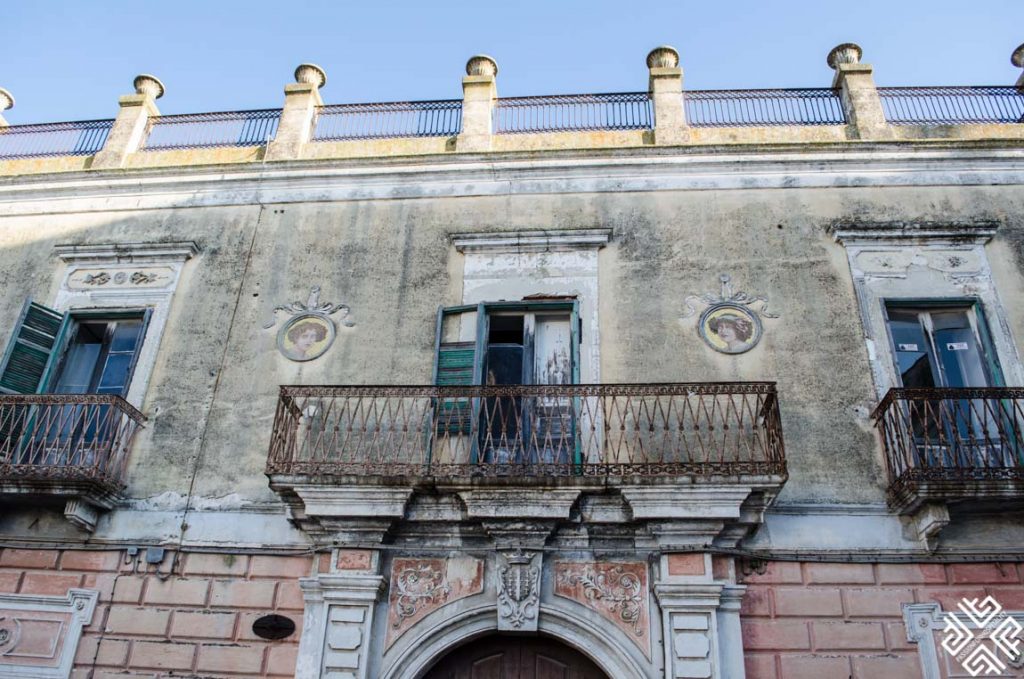
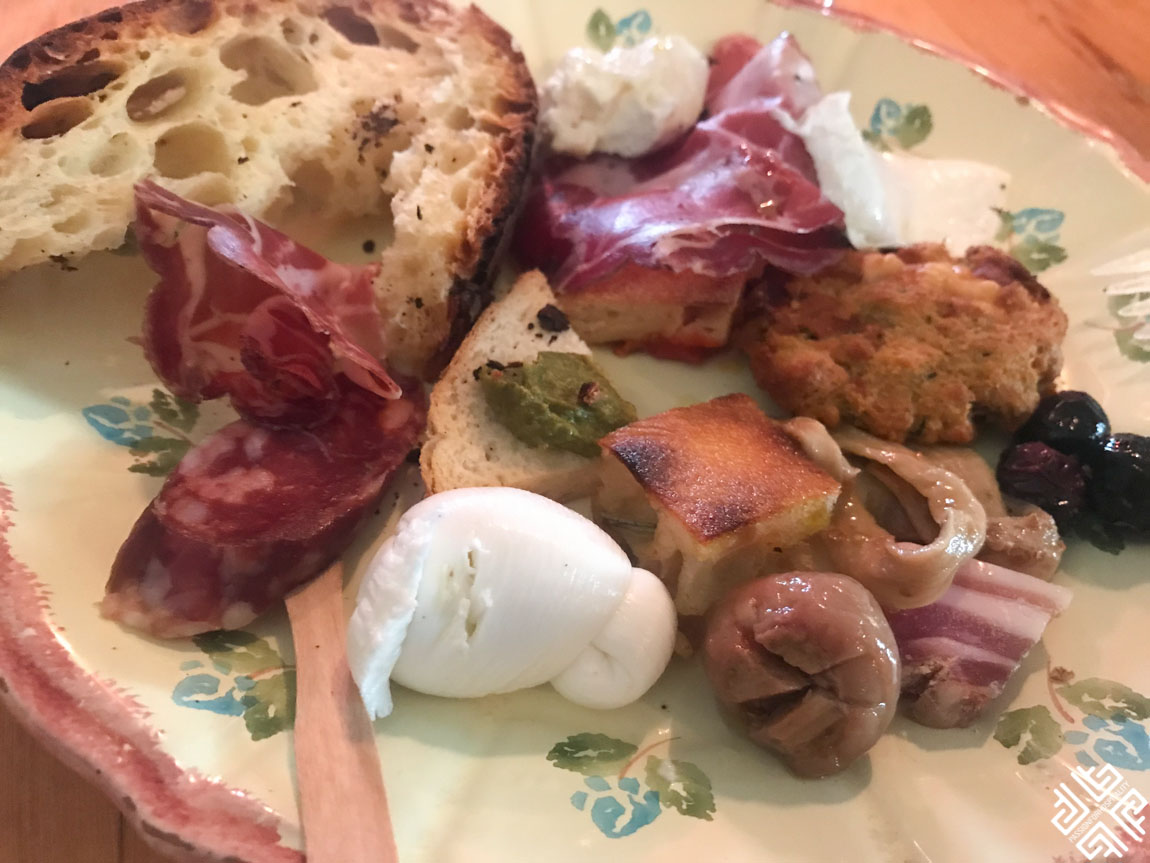


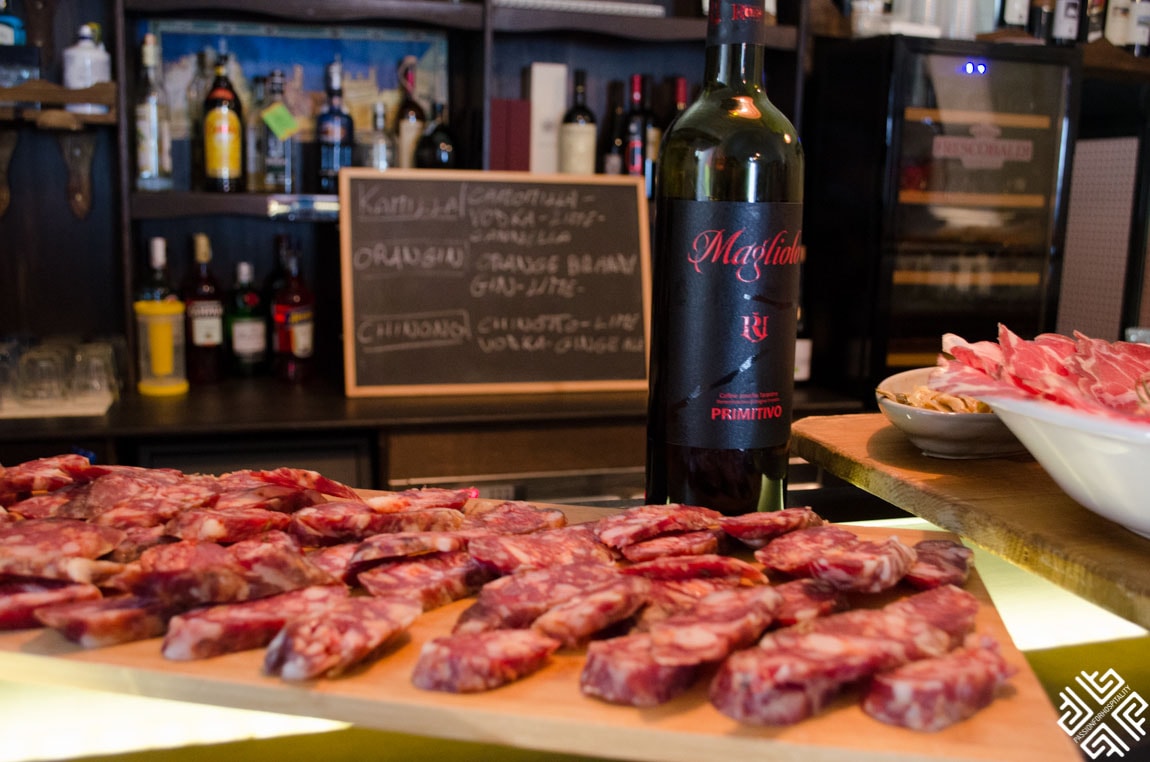
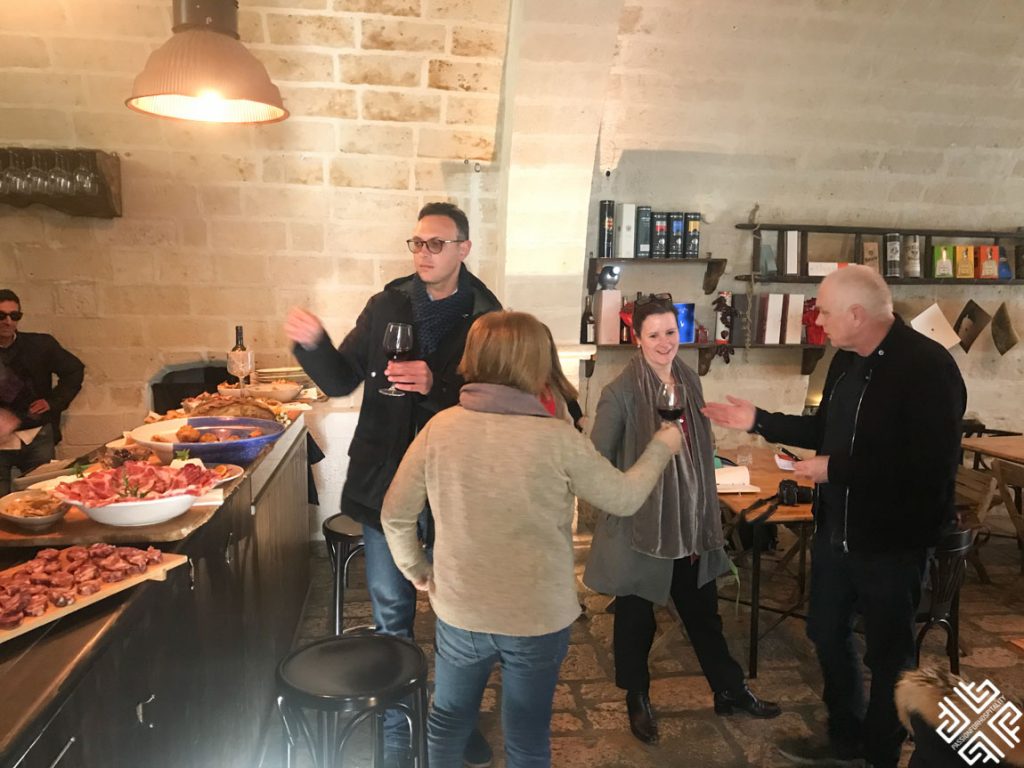
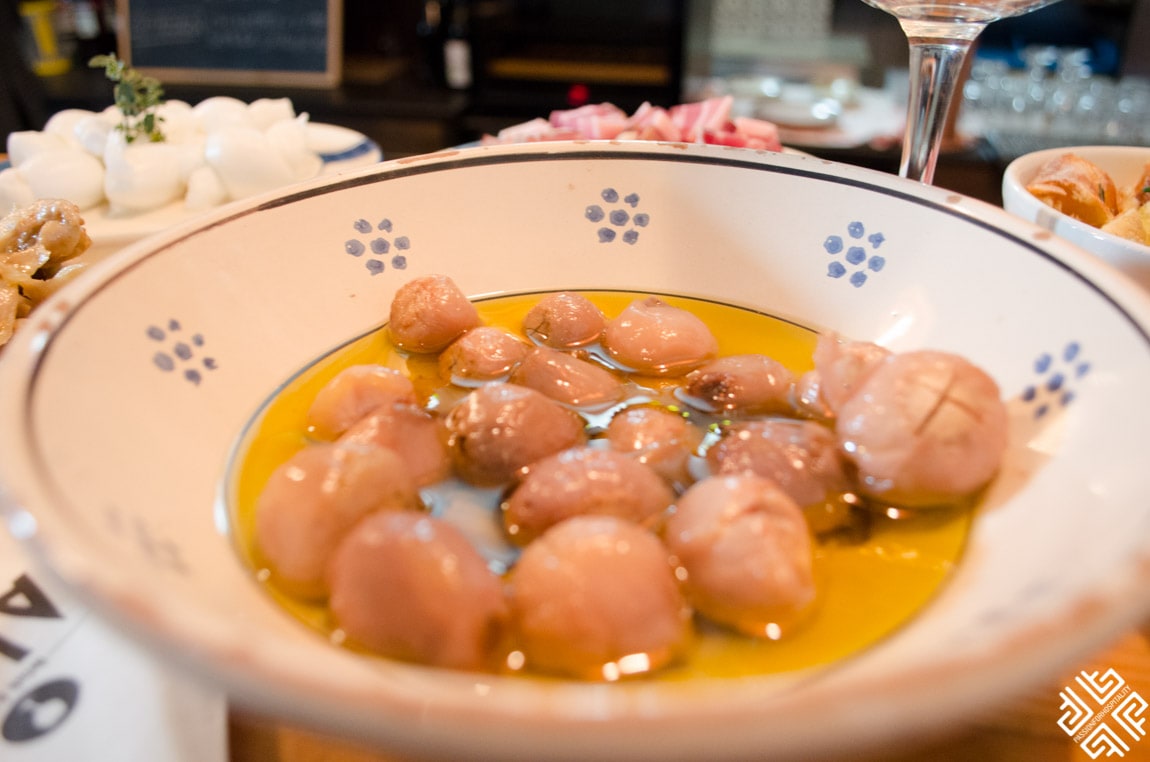
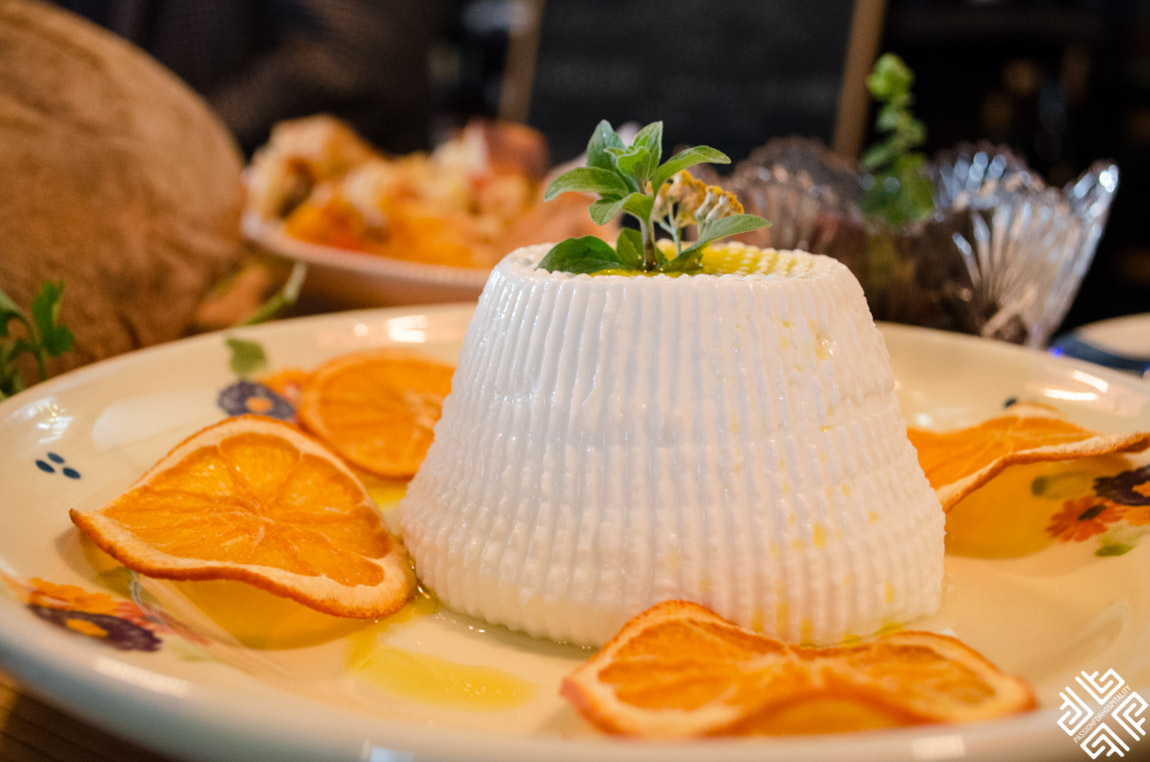

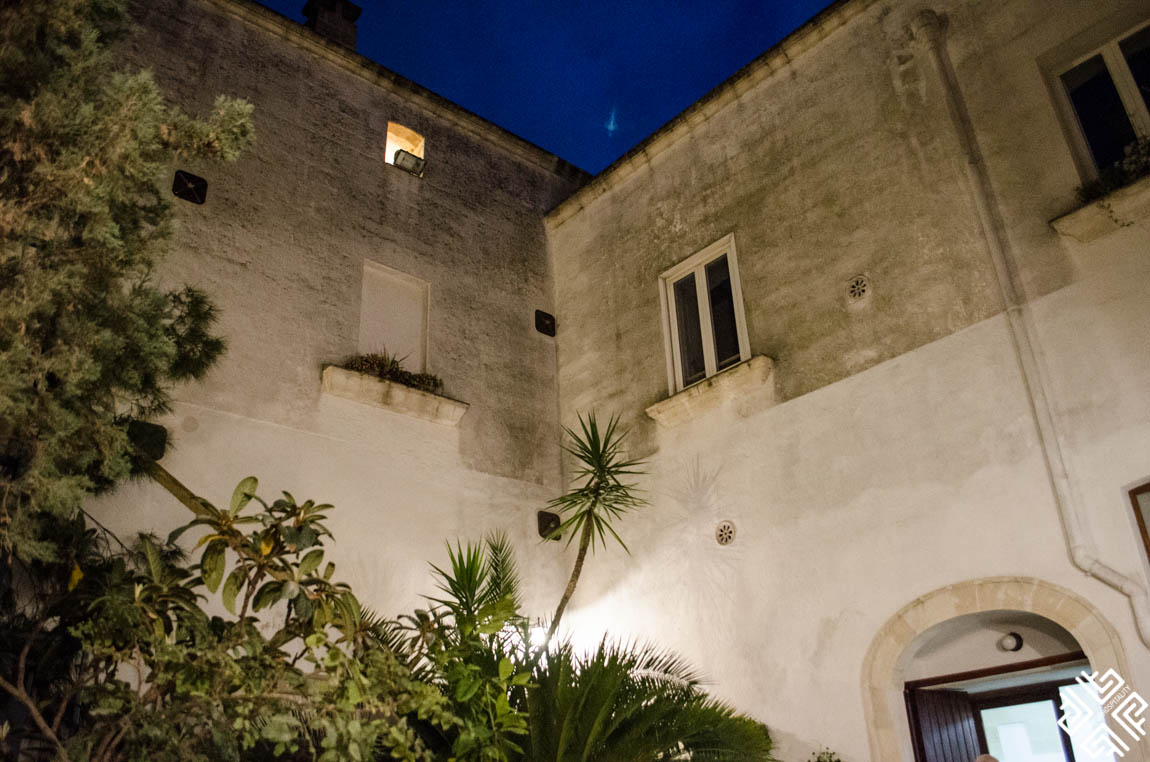
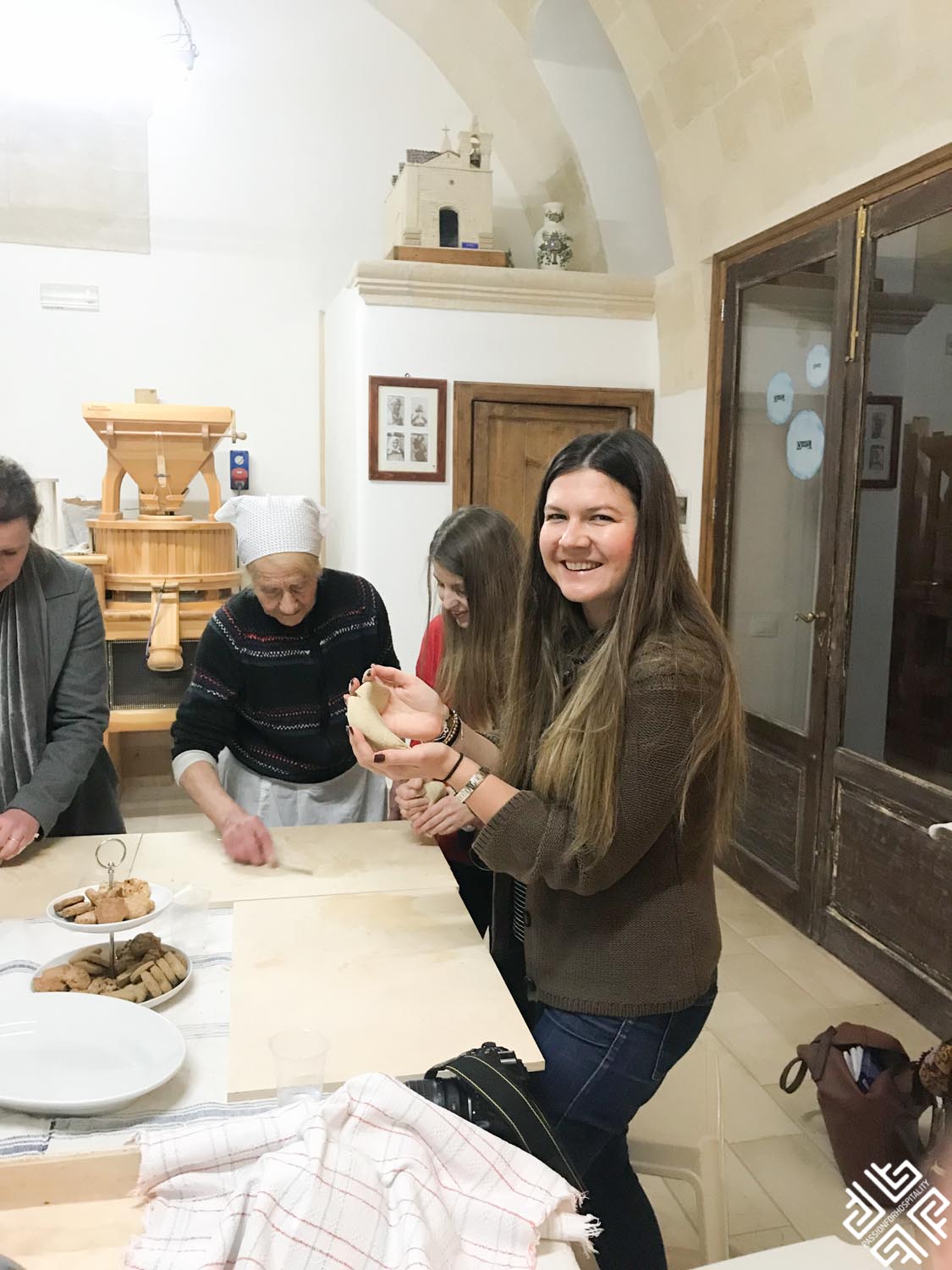



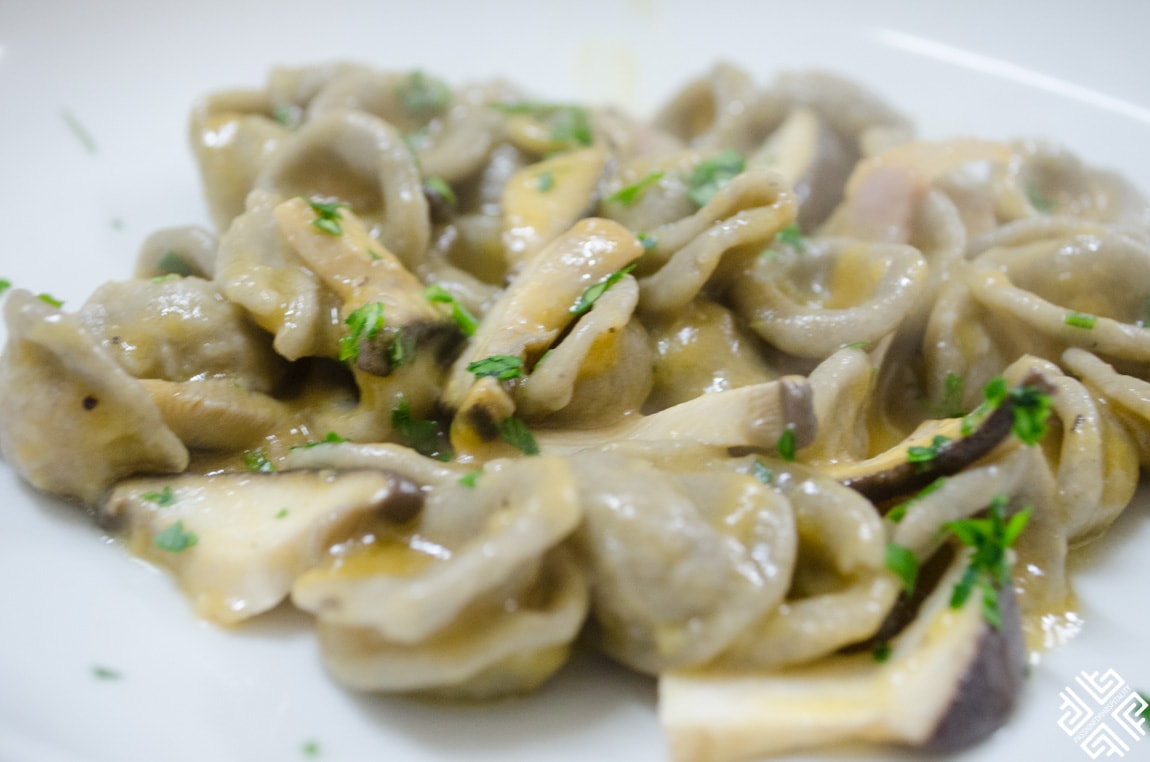
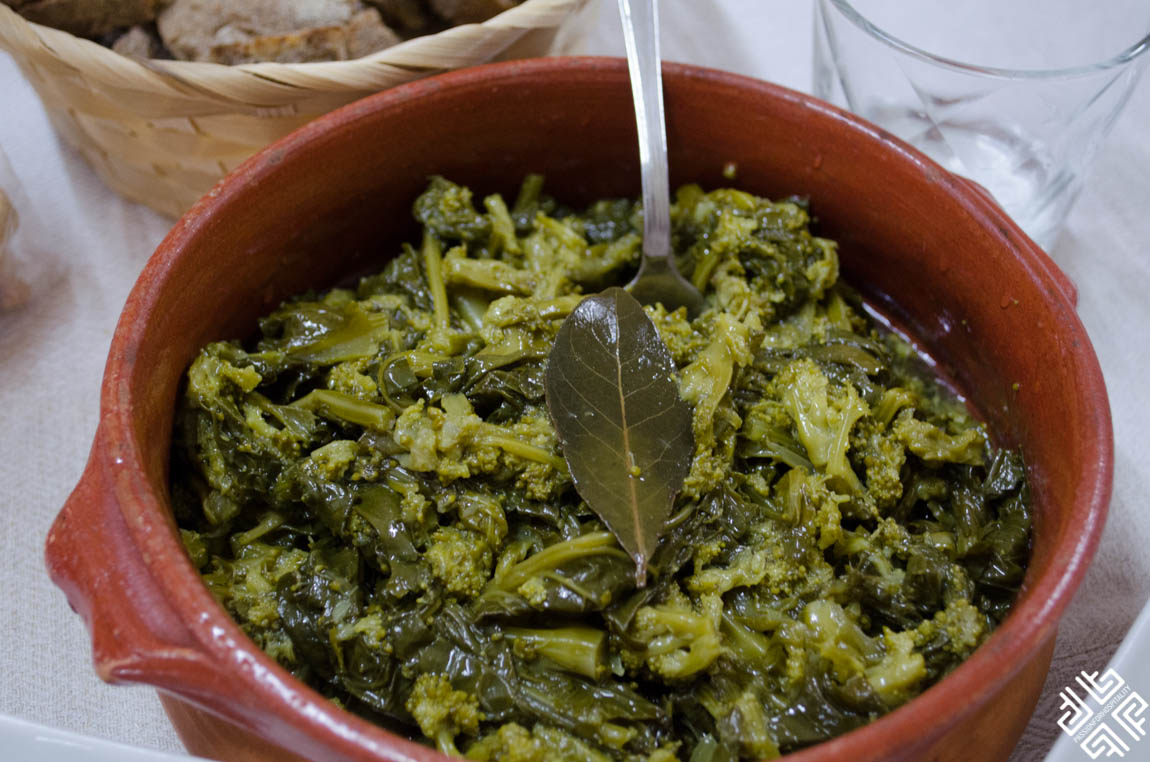
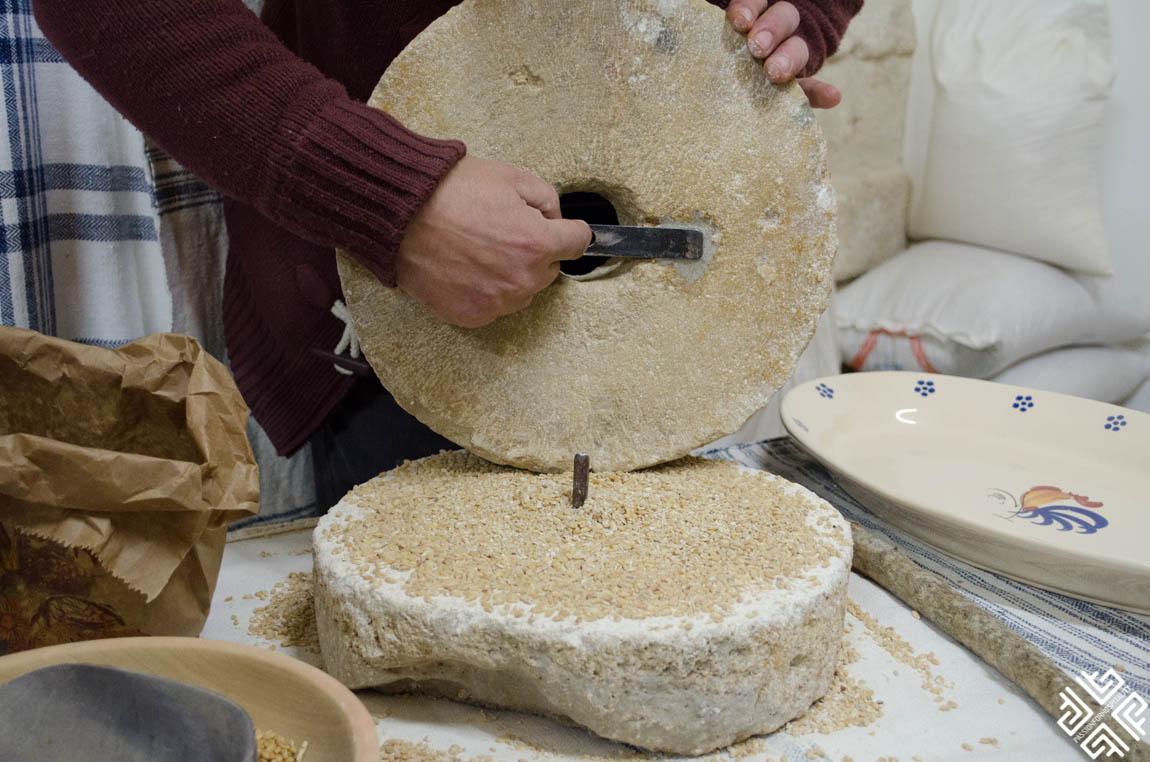

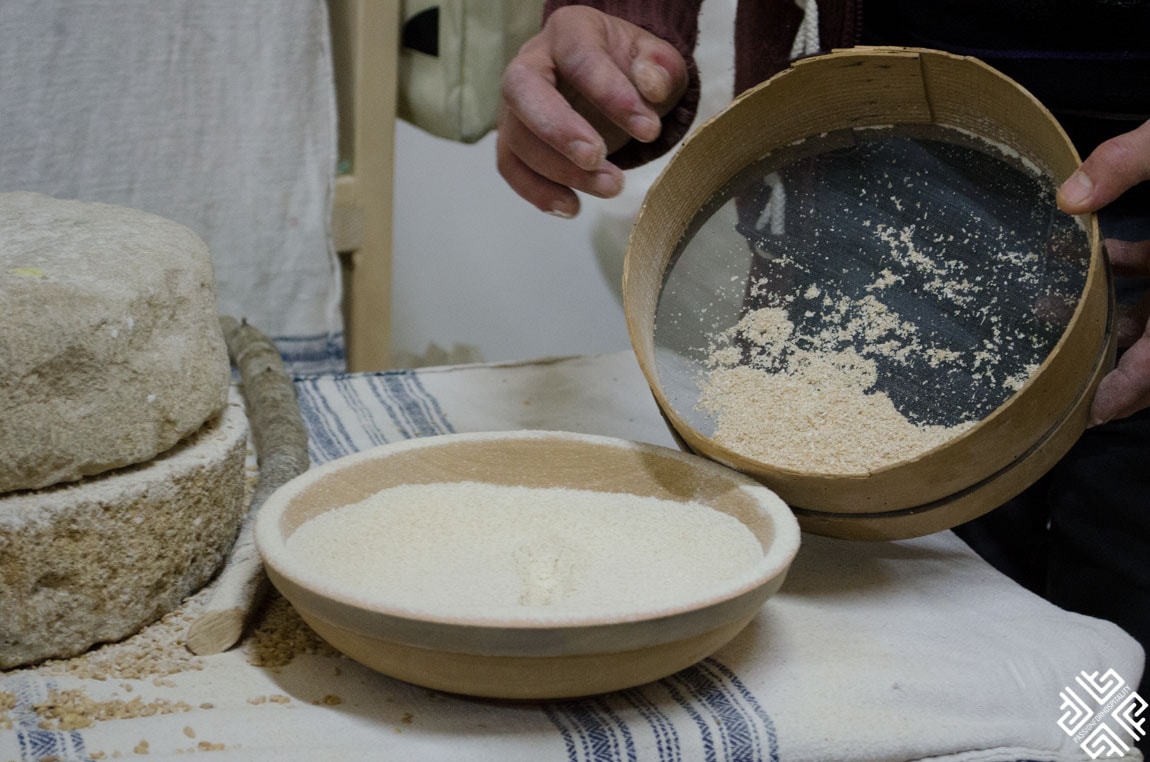
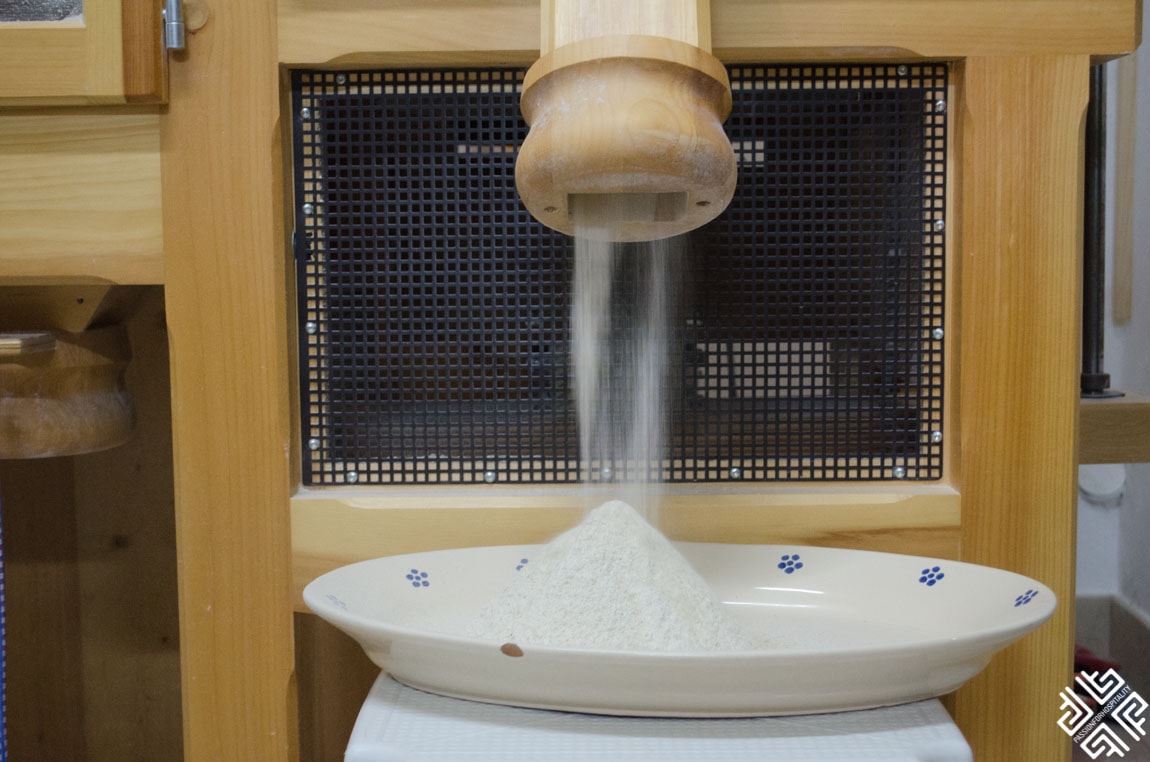
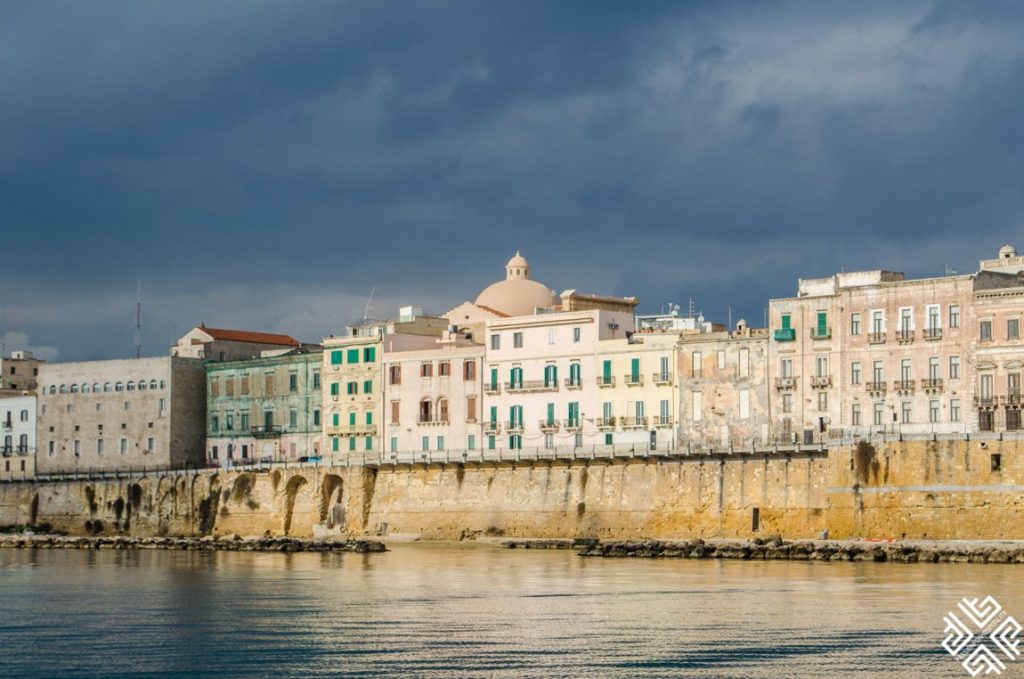
 Elena Sergeeva
Elena Sergeeva